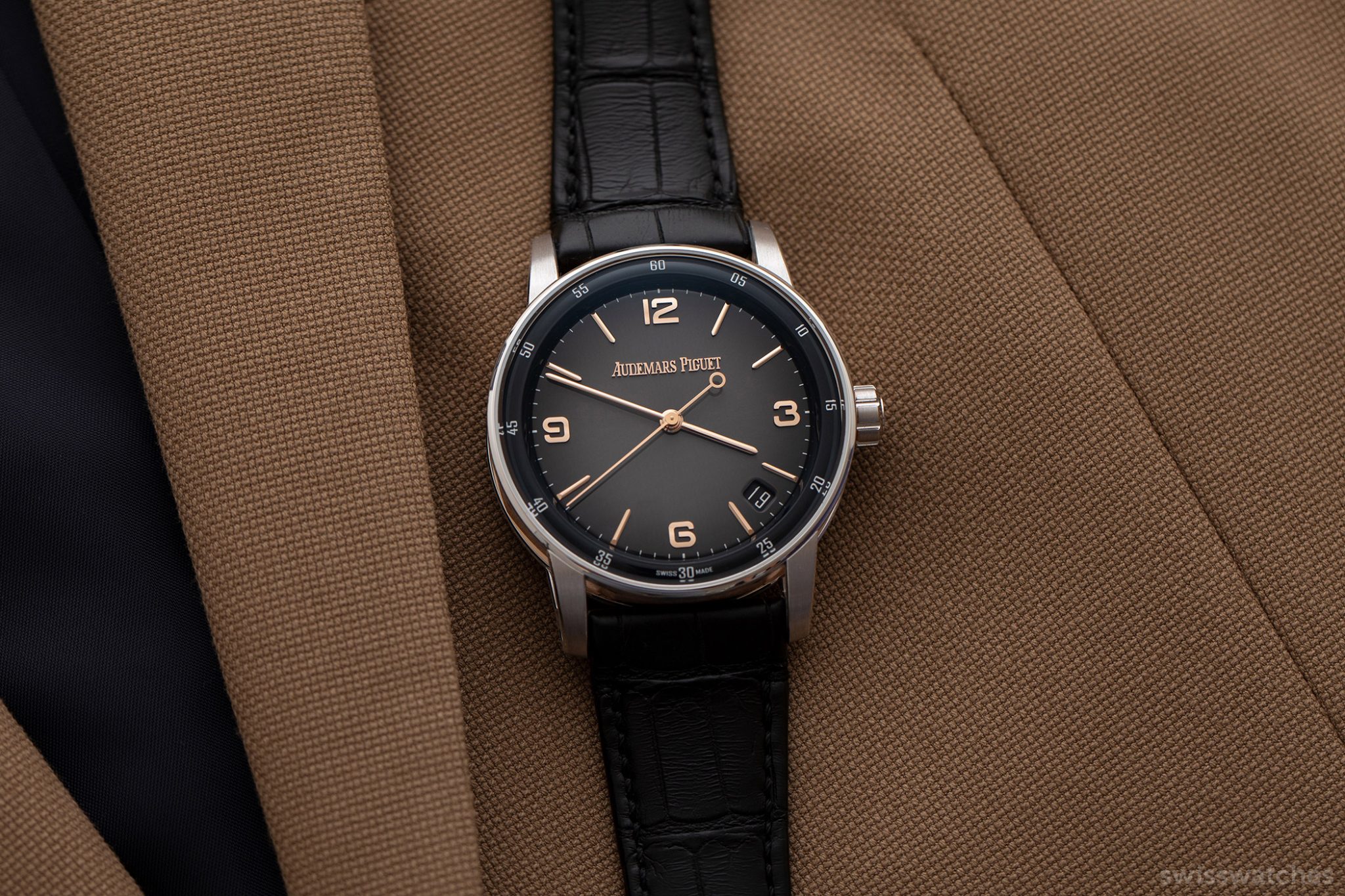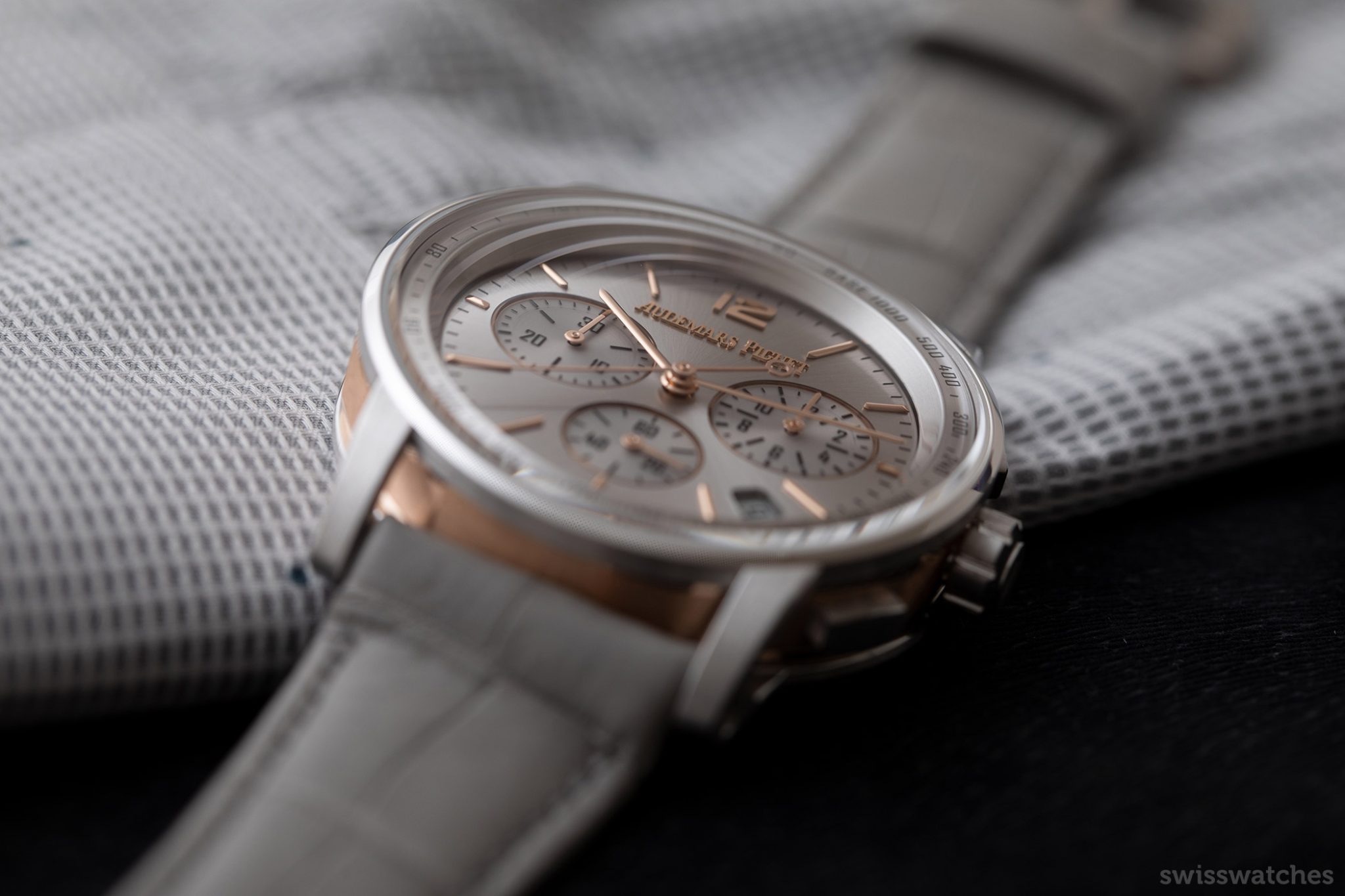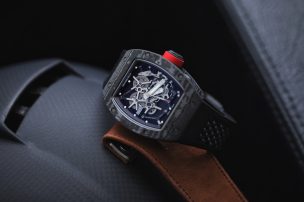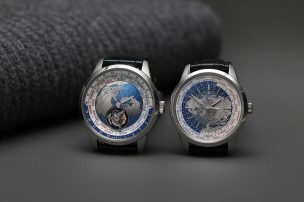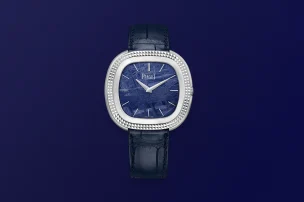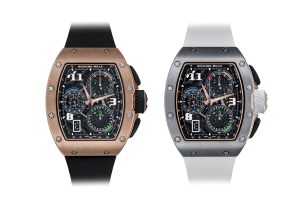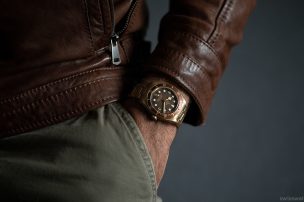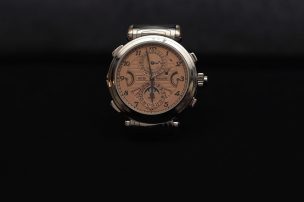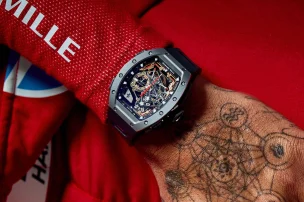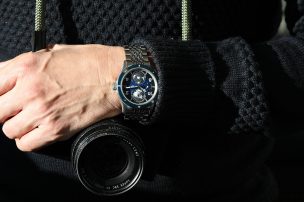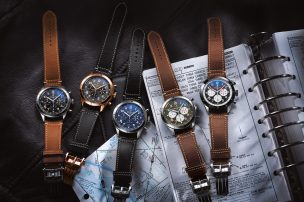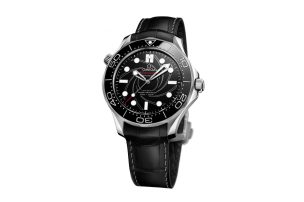

Point Of View: CODE 11.59 by Audemars Piguet 2020
As was the case last year, the 2020 CODE 11.59 by Audemars Piguet line breaks numerous boundaries, but everyone knows that when it comes to Audemars Piguet, the line still isn’t the star of the show. But does that mean it can’t become an iconic part of the watchmaker’s portfolio in the future?
Audemars Piguet has a rich history; it’s one of the earlier players in the game, having been in the watchmaking industry ever since 1875. Over the years, the horology house has been one for experimentation and innovation, having achieved the likes of manufacturing the world’s first minute-repeater movement to be used in a wristwatch (1892).
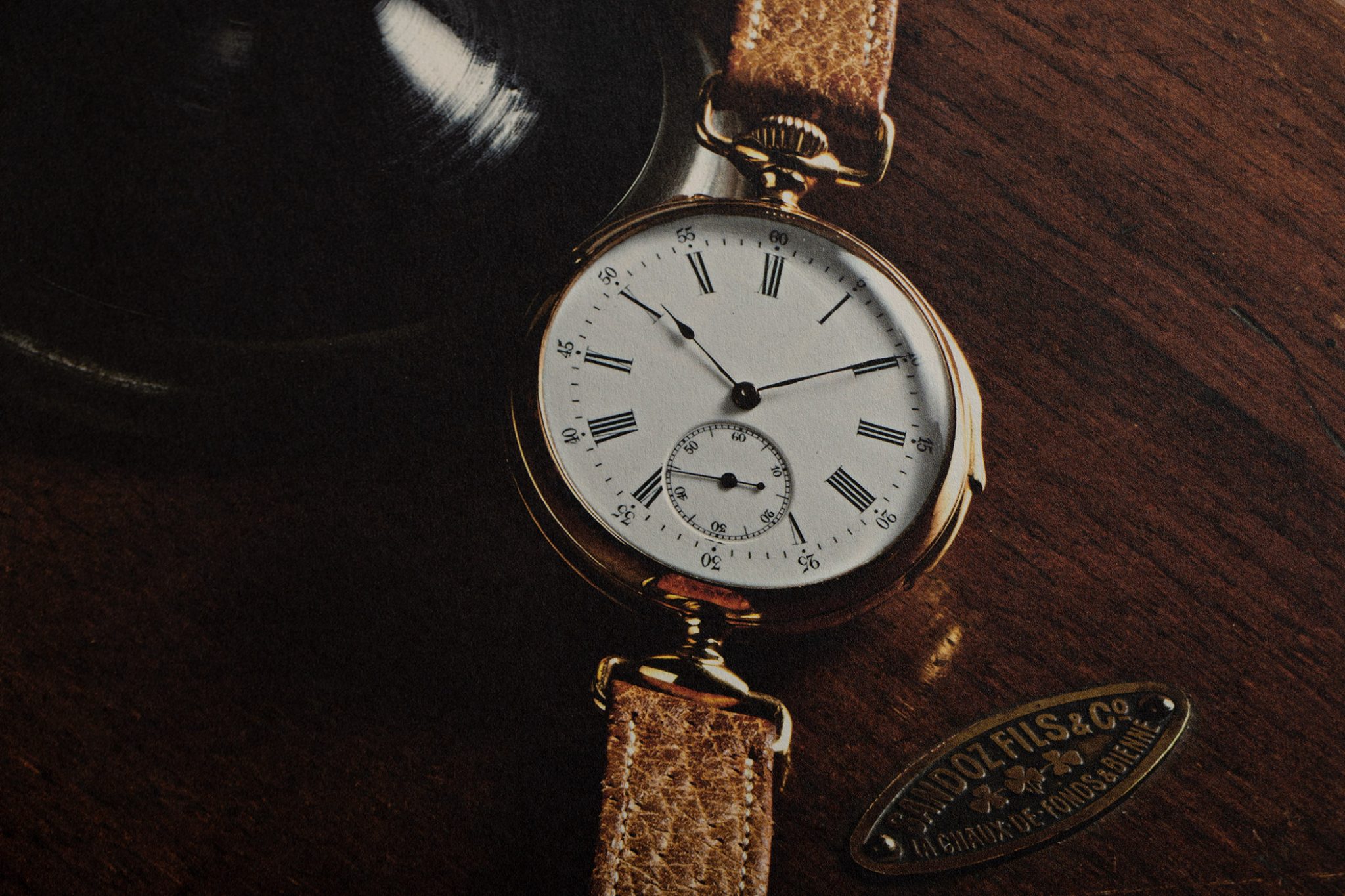
World’s first minute repeater wristwatch
This was closely followed by the ultra-complicated Universelle model (1899), which featured a split-second chronograph, jumping and deadbeat seconds, grande strike, minute repeater, alarm, and perpetual calendar. AP also developed the world’s first skeleton watch (1934) as well as the world’s first perpetual calendar wristwatch to feature a leap year display, day, peripheral date, month, and moon phases (1955).
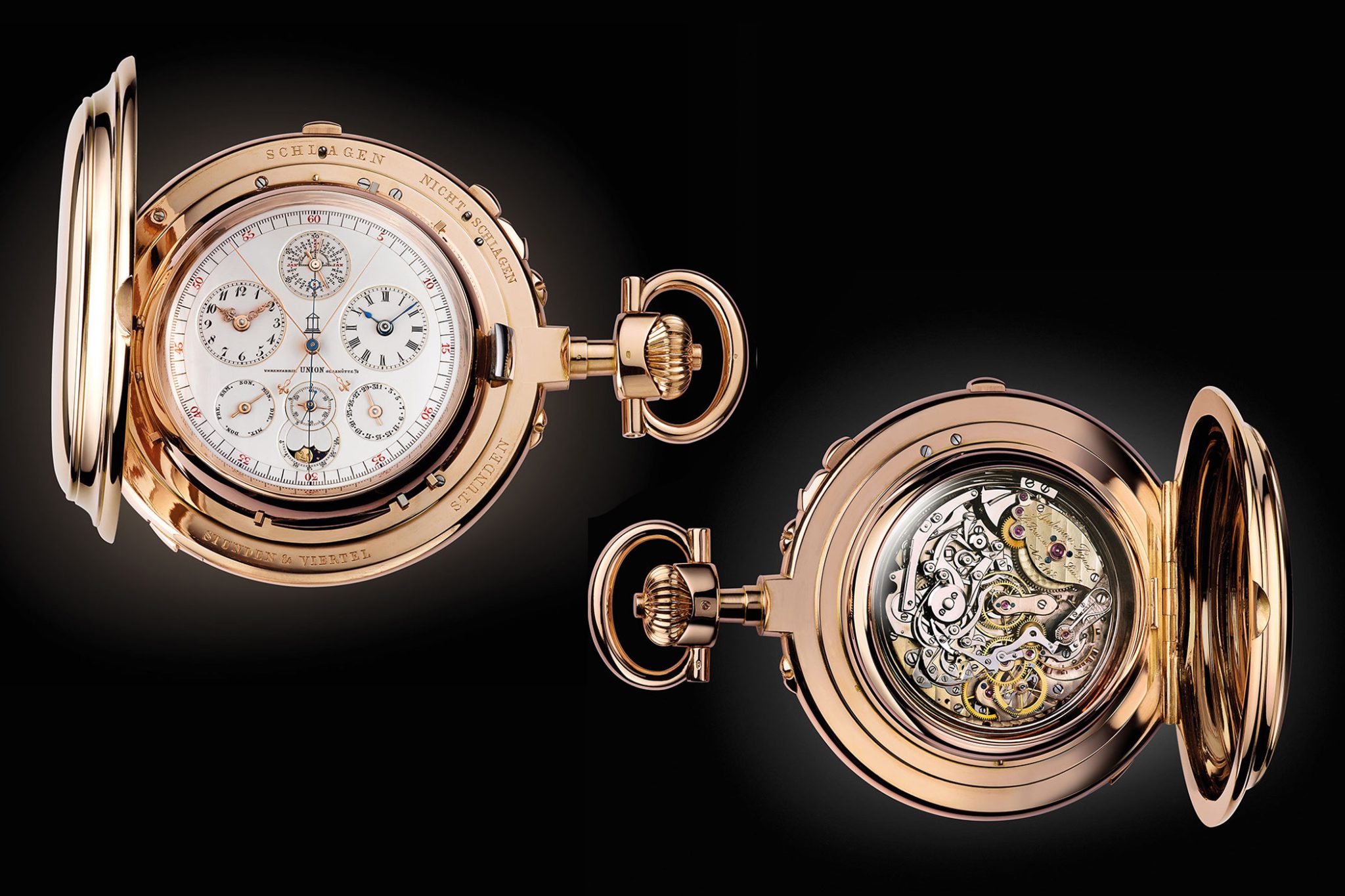
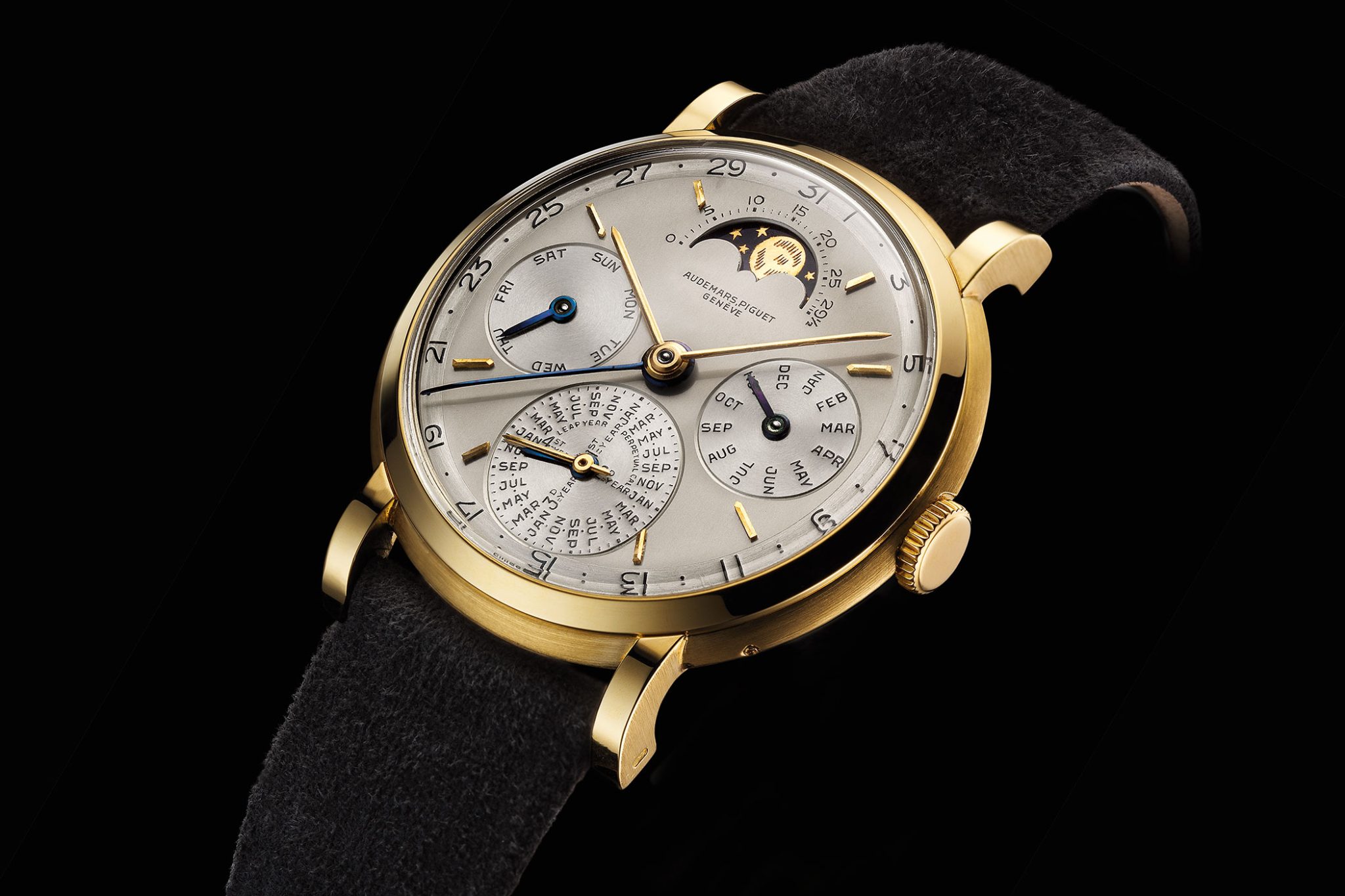
1899 Universelle model (left)
1955 Perpetual Calendar (right)
However, around the 70s, the brand began to stick to selling certain successful, sportier lines, which would remain at the forefront up into the 21st century. This brings us to the 2020 CODE 11.59 by Audemars Piguet. Having first been introduced only last year, these watches are a part of a significantly classic collection in comparison to the watchmaker’s bestsellers of the recent past. The renewed focus on classic dress watches and significant investment in the still very youthful line begs the question – could the CODE 11.59 by Audemars Piguet have the potential to become another defining piece in the history of the formidable manufacture from Le Brassus?

2020 CODE 11.59 by Audemars Piguet
Why create the CODE 11.59 by Audemars Piguet?
The popularity of Audemars Piguet has been increasing year on year for almost a decade. According to CEO François-Henry Bennahmias, who we spoke with last year, every single one of Audemars Piguet’s markets around the globe could be selling 50 percent more watches than they are (currently 40,000). In this sense, Audemars Piguet centres its strategy around exclusivity. “The volume is directing everything we do,” says Bennahmias. “If we control the volume, we can control the integrity and quality of the deliveries.”

CEO François-Henry Bennahmias
For this reason, the dial supplier for the CODE 11.59 by Audemars Piguet was surprised when the horology house ordered 4,000 pieces last year, compared to 2,000 the year before. However, it was no mistake – this year, Audemars Piguet is doubling the quantities of its CODE 11.59 watches. This development reflects the brand’s decision to increase production in 2020 to 45,000 watches – and moreover, it means 2,000 out of the 5,000 extra watches will be CODE 11.59 by Audemars Piguet.
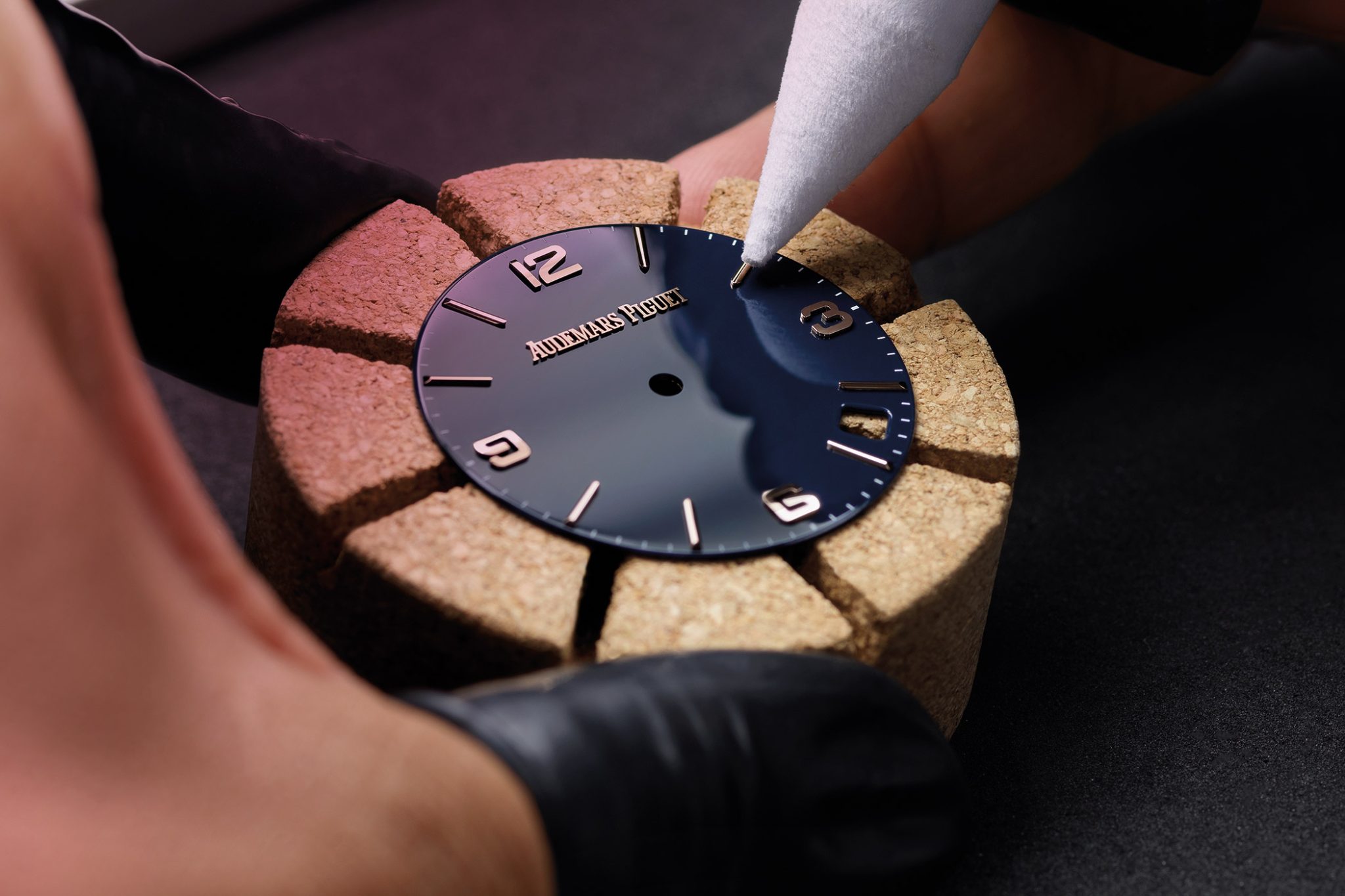
According to Bennahmias, the “main reason for the CODE 11.59 by Audemars Piguet was to bring forward the history of the brand.” This not only includes recalling details from past creations, but also aims to highlight its ability to be innovative – something AP has had a lot of experience with over the past 145 years. During the quartz crisis, for example, as numerous watchmakers crumbled, Audemars Piguet coolly produced the world’s thinnest self-winding perpetual calendar.
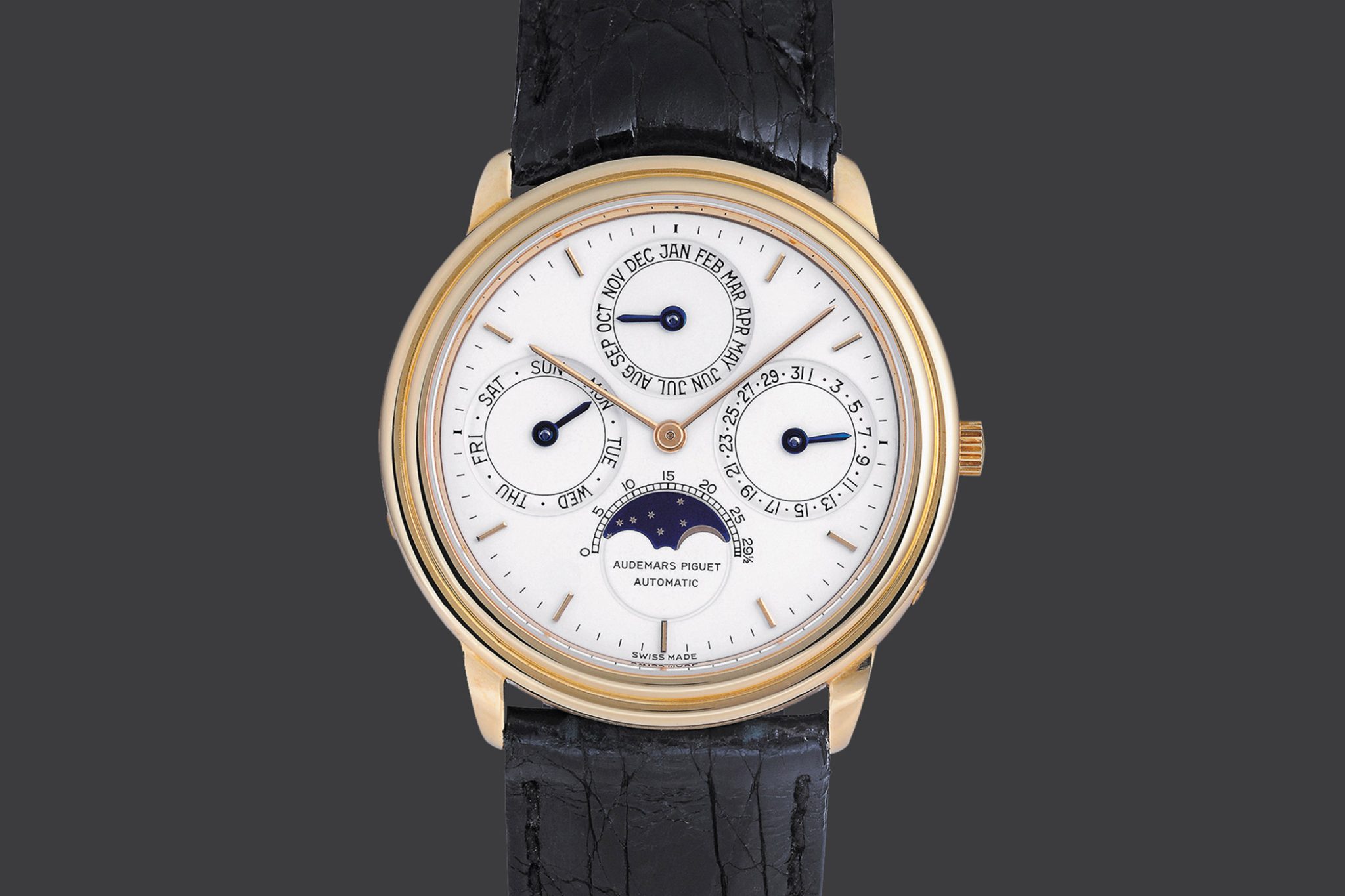
1978: the world’s thinnest self-winding perpetual calendar
Creativity didn’t stop at complications, however, but has also been present aesthetically in past designs, from asymmetrical cases to octagonal, diamond-set bracelet watches. This relentless drive for innovation, in any form, is what the CODE 11.59 collection aims to represent – all the while keeping in mind that the line must be timeless.
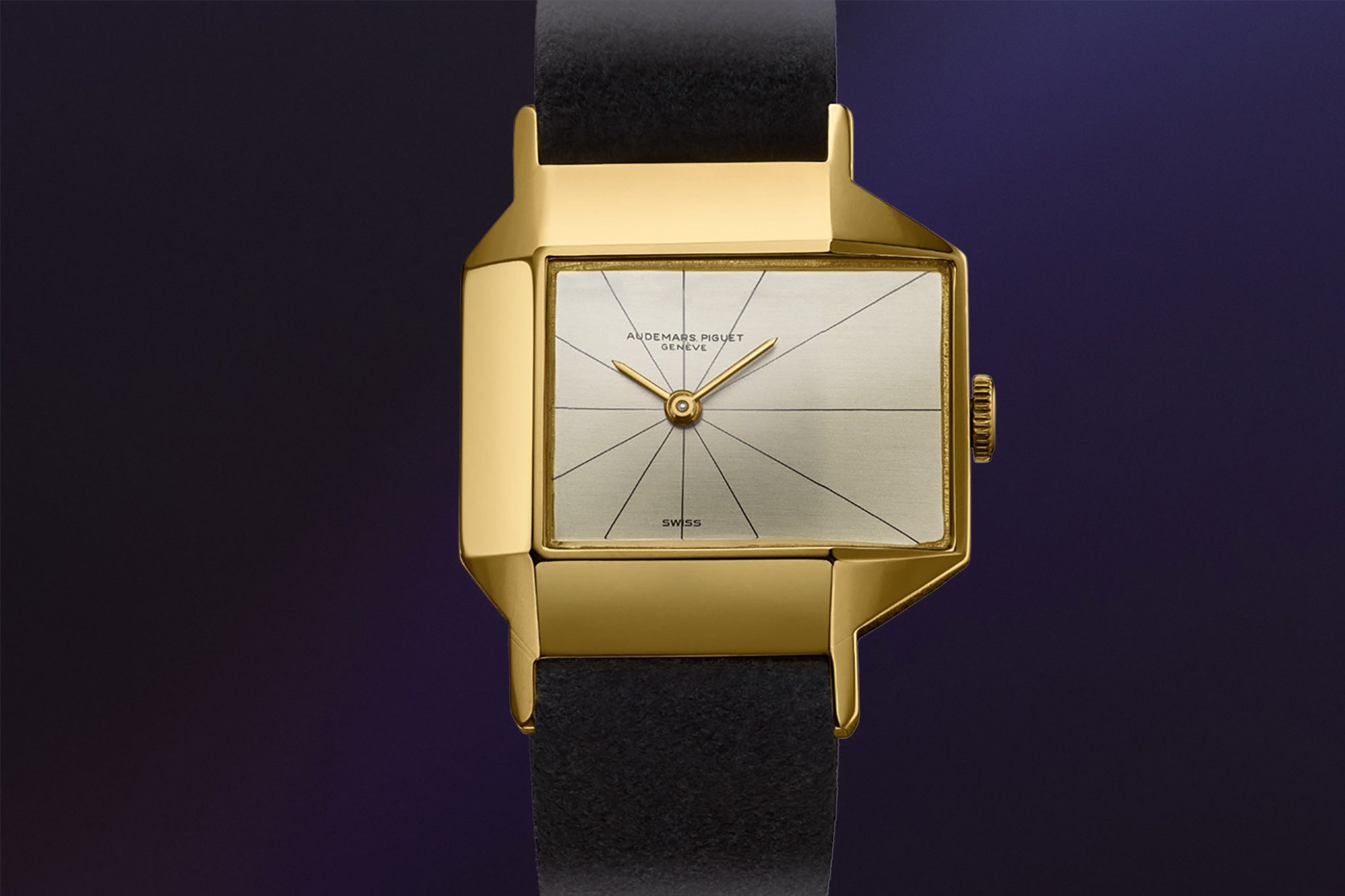
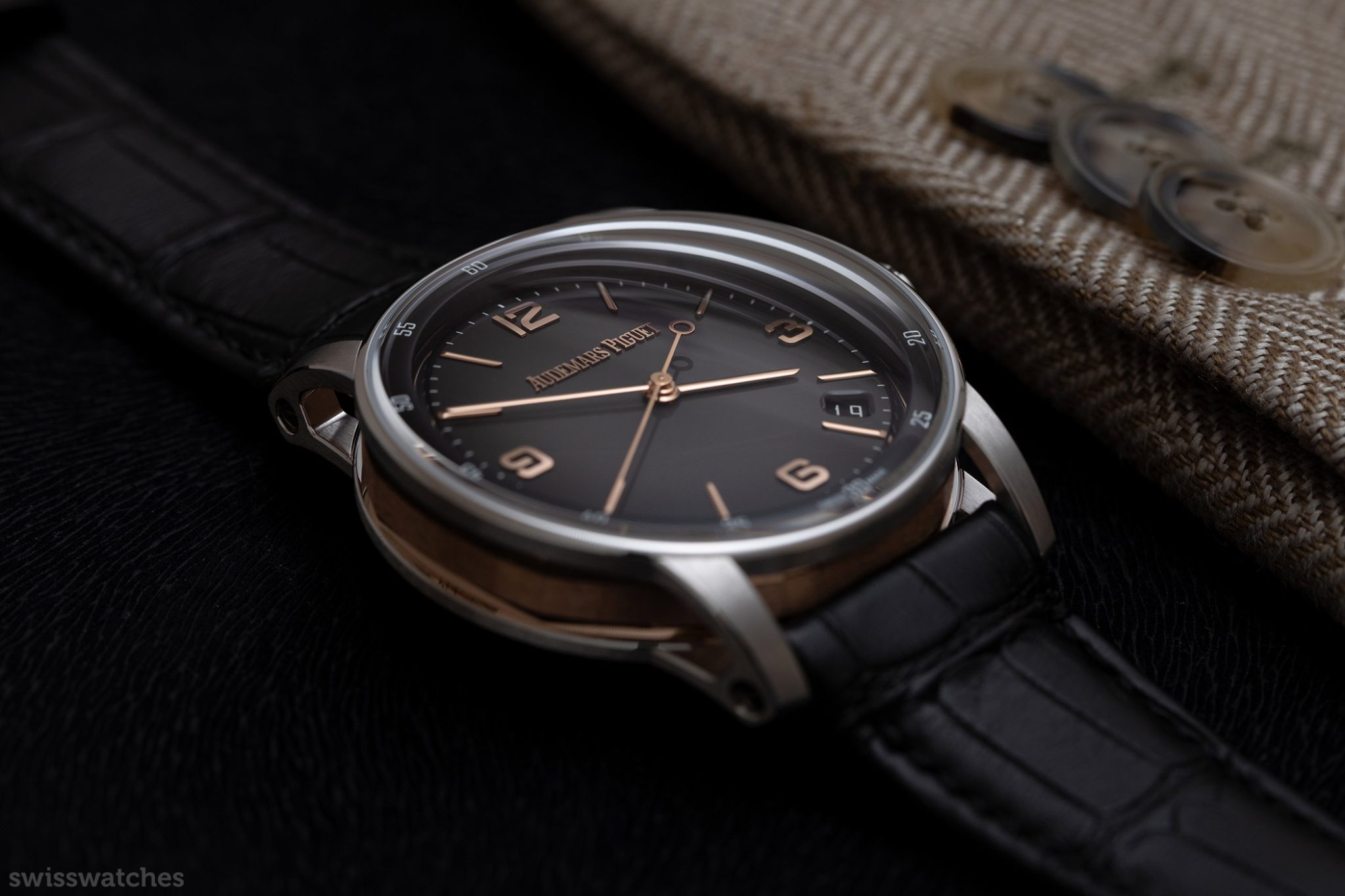
The CODE 11.59 watches took no less than seven years to create as a concept. This demonstrates the amount of depth and consideration that lies behind the watches’ designs. The timepieces are built to impress, as Bennahmias tells us: “We wanted people to look at CODE 11.59 by Audemars Piguet from a watchmaking point of view and say: ‘respect'”.
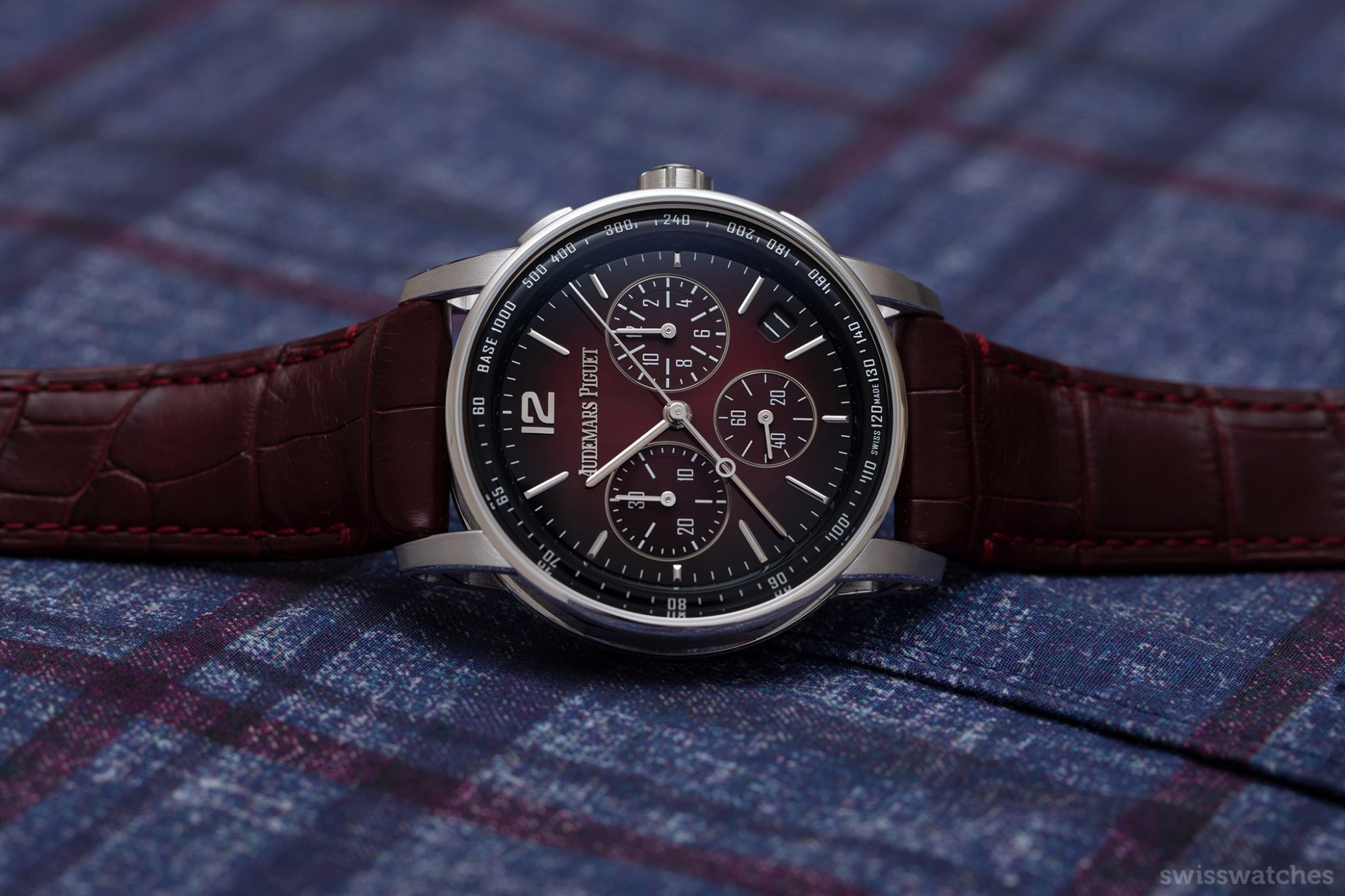
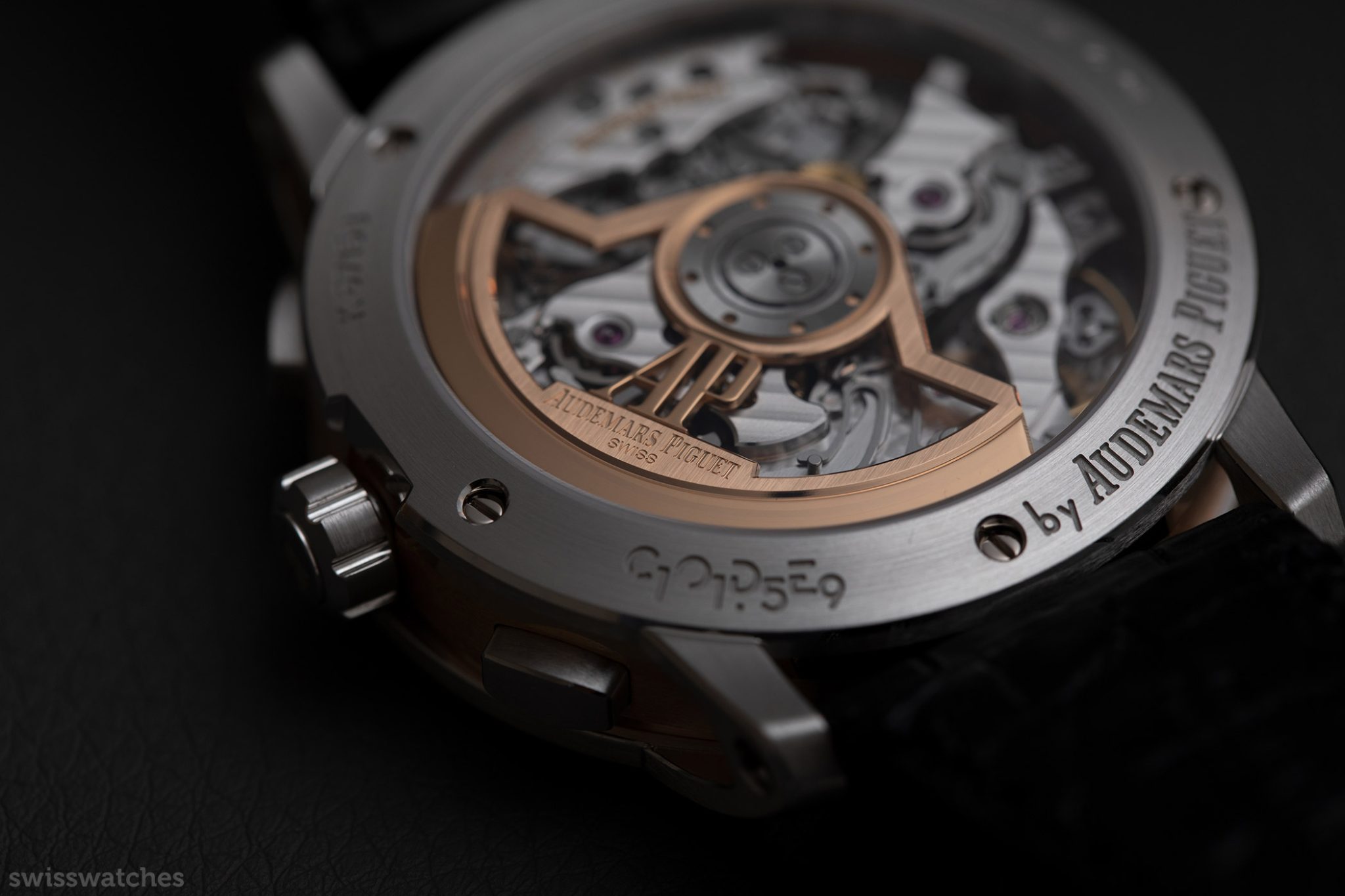
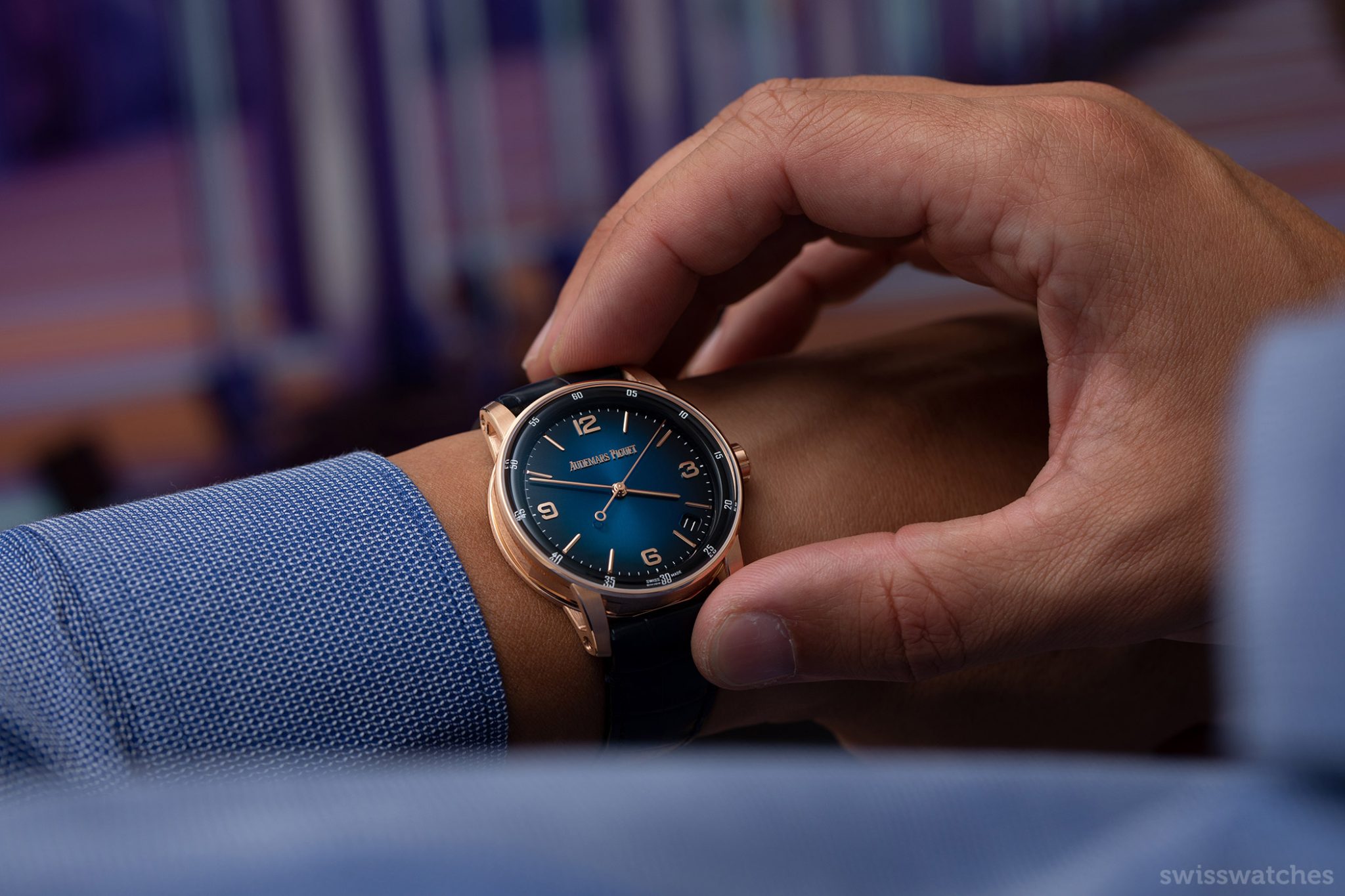
Perhaps most important of all is the meaning behind the name of the collection, which is indicative of the strategic thinking behind the watches:
- Challenge – Challenge the limits of craftsmanship
- Own – Our roots and legacy
- Dare – To follow firm convictions
- Evolve – Never stand still
- 11.59 – The last minute before a new day
The Collection Itself: From 2019 to 2020
As mentioned, the CODE 11.59 by Audemars Piguet collection only came into existence only last year, when it was presented at the “Salon International de la Haute Horlogerie (SIHH) 2019” and received undeniably mixed reviews. Six models – in the form of 13 references – were presented: this included two Selfwinding and Chronograph Selfwinding models, a perpetual calendar, two watches with tourbillons – the Tourbillon Openworked and the Selfwinding Flying Tourbillon, and to top it off, the Minute Repeater Supersonnerie. The automatic, chronograph and tourbillon editions also marked the introduction of three new calibres.
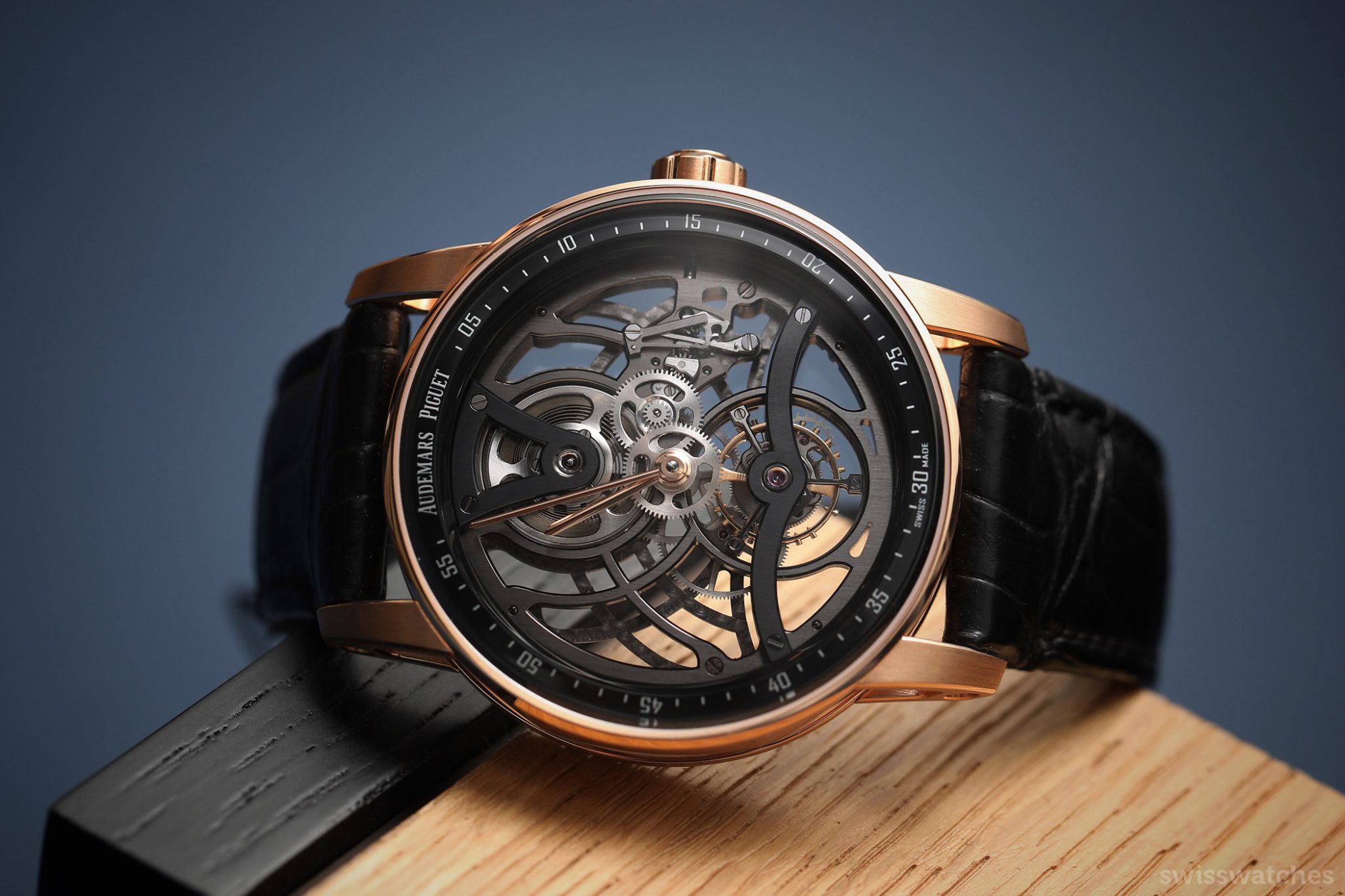
Tourbillon Openworked
This year, the brand is introducing five new Selfwinding references, as well as five new Chronograph Selfwinding models. It’s not yet known if we can expect to see more complicated models, but if we do, could this help us to gauge the reception of last year’s other CODE 11.59 editions?
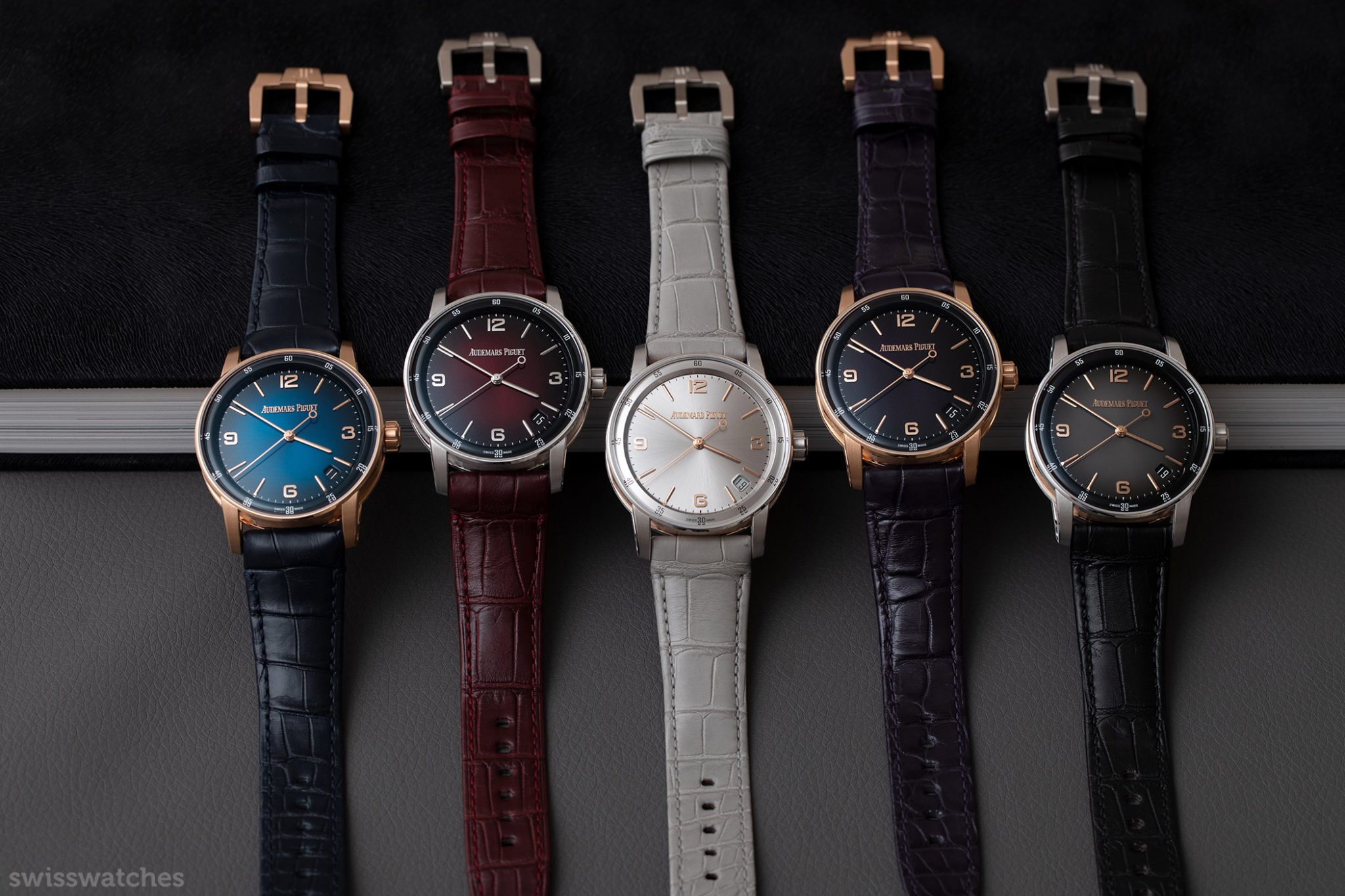
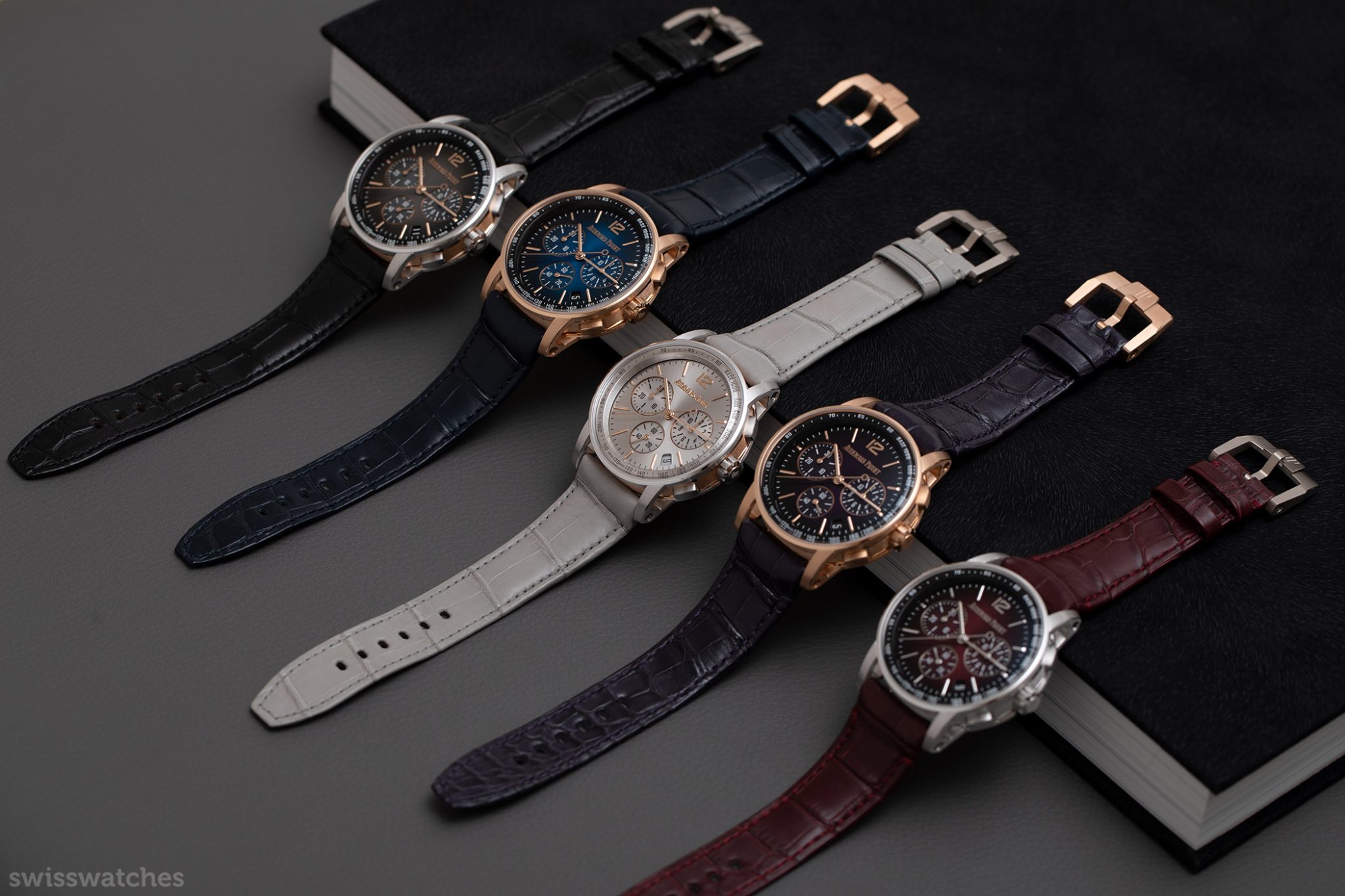
2020: New Editions, New Designs?
In all honesty, the 2020 CODE 11.59 watches aren’t drastically different to their 2019 predecessors. However, the new dial colours and case materials are definitely well worth taking a look at. The smoked, lacquered dials feature a sunburst pattern and come in hues of blue, burgundy, and purple, as well as light grey or dark grey.
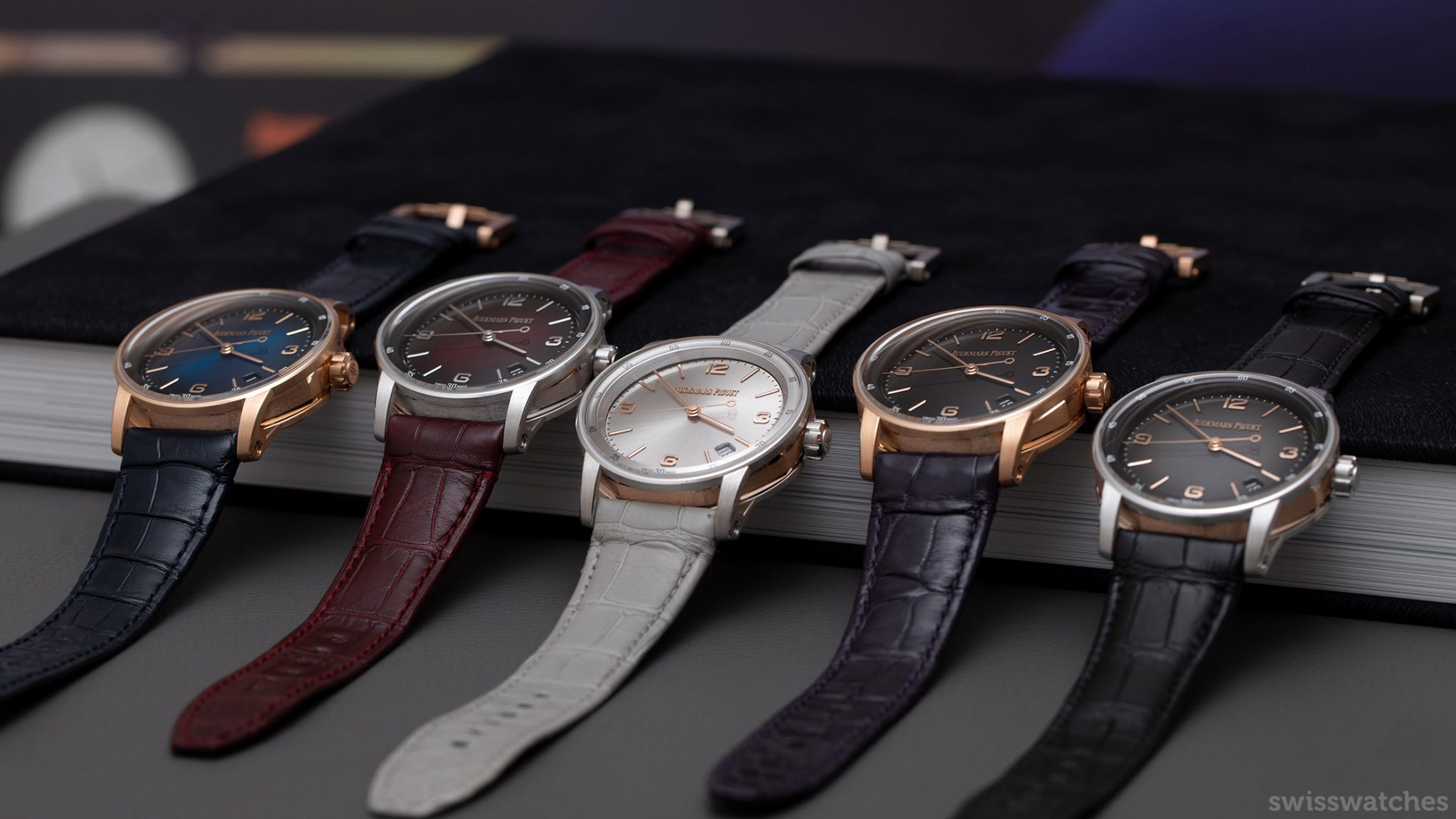
The inner bezels are coloured black or grey, adding a layer of depth to the already richly coloured dials. On some editions, for example purple or, to an extent, burgundy, the sunburst pattern is almost lost due to the deep, dark colour of the dials. On other editions, however, such as the blue dial versions, the light and dark blue hues come across beautifully in the sunlight. Meanwhile, the grey dial showcases the sunburst pattern particularly well, but appears to be more white than grey at first glance – arguably making it somewhat more of a feminine choice.
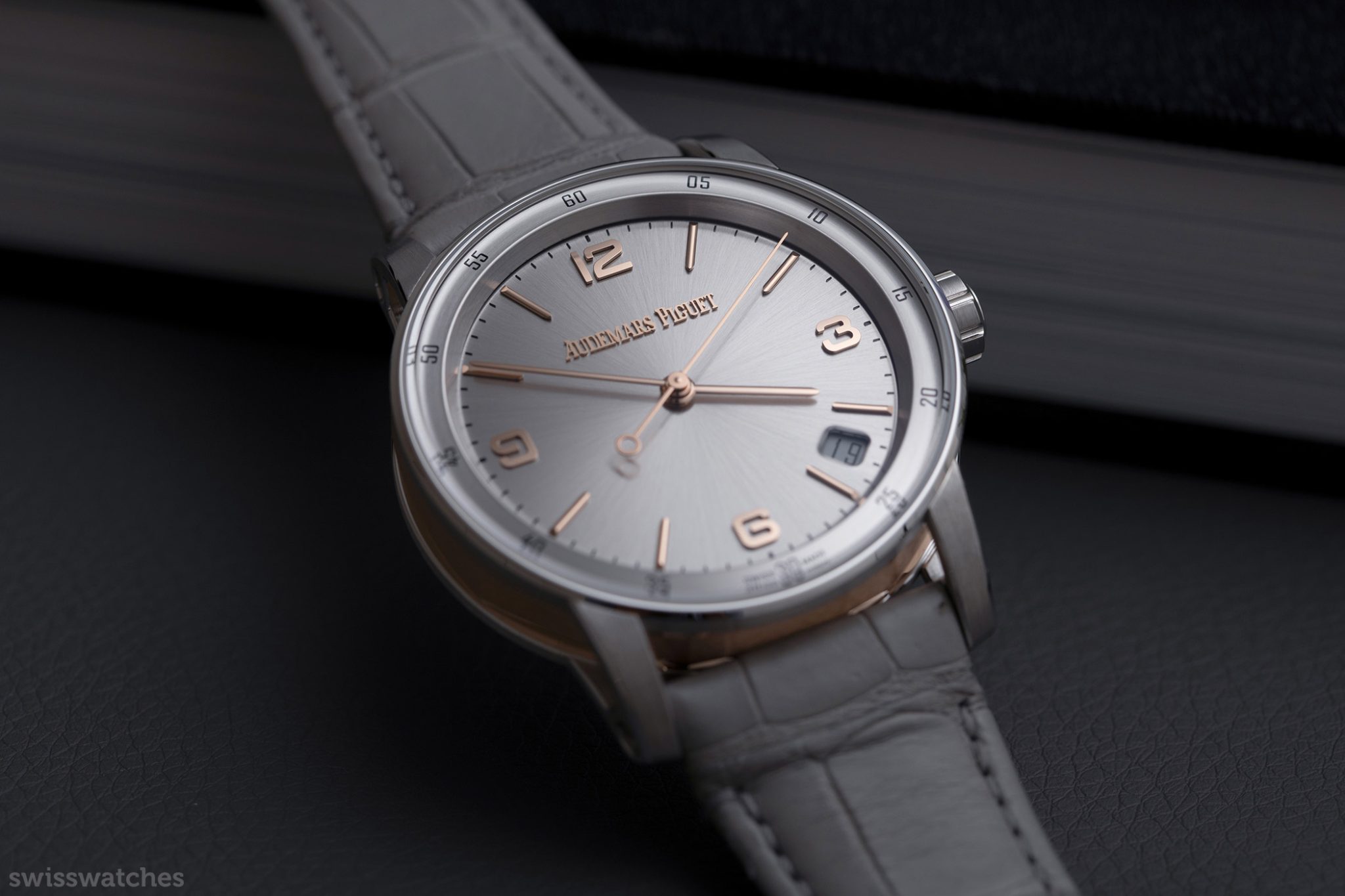
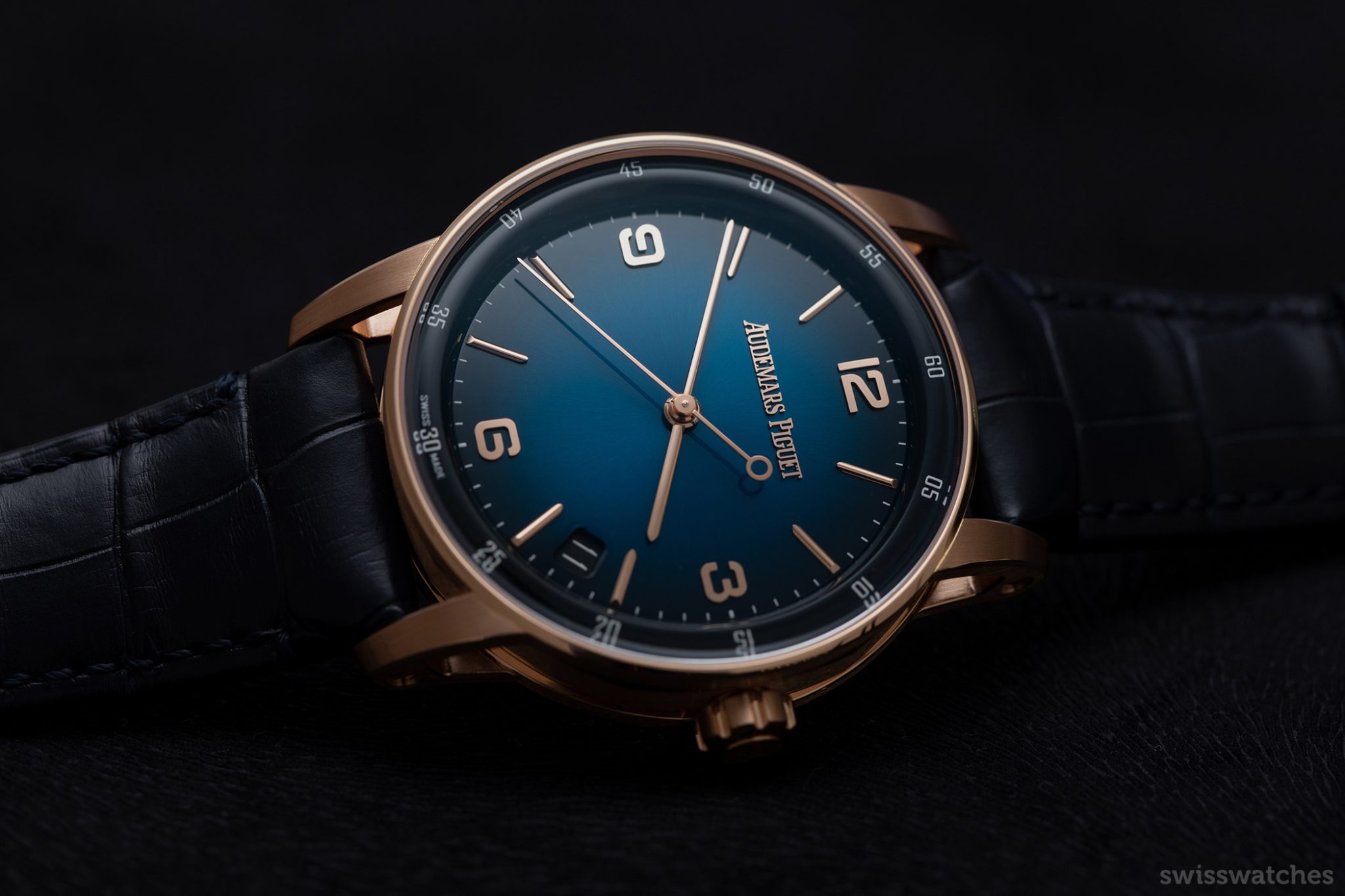
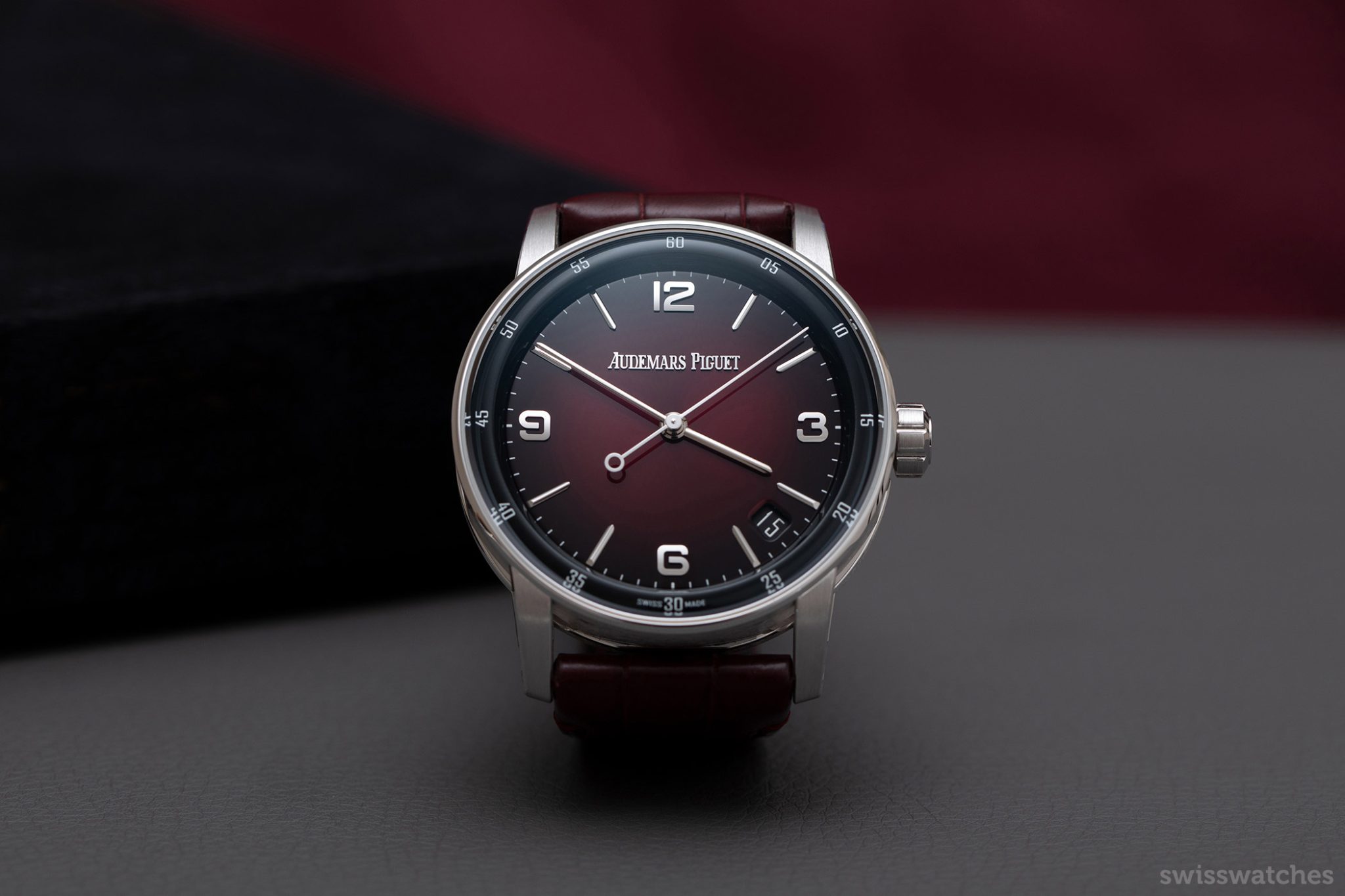
On that note, the new colours definitely work in favour of the brand’s unisex design – Bennahmias has described as CODE 11.59 by Audemars Piguet as “not a men’s watch, not a women’s watch, it’s a watch.” It will be interesting to observe whether the bold purple, silver and burgundy watches, in particular, prove to be more of a hit amongst women or men. After all, the collection marks the first time that the brand has consciously created a line for both men and women.
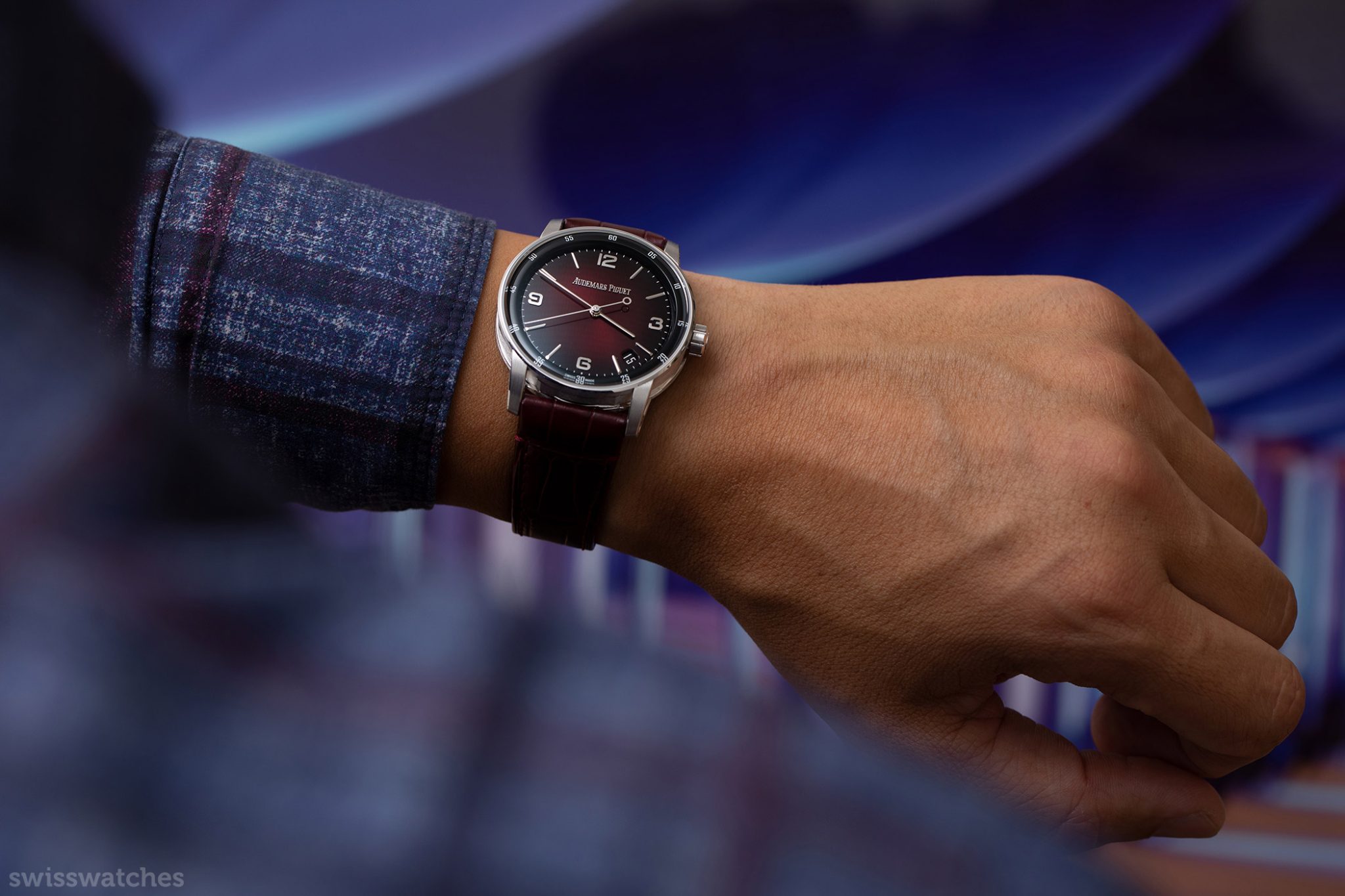
Unlike last year’s CODE 11.59 watches, some of the new editions mix things up by combining the vivid dials with two-tone gold cases. The four light and dark grey dial models combine an 18-carat pink gold middle case with an 18-carat white gold bezel, lugs and caseback. Interestingly, the applied hour markers and hands match the middle case material rather than the bezel, which definitely accentuates the bicolour aspect of the watch from every angle. Whether or not this combination really works is arguably a matter of taste. It should also be pointed out that while Audemars Piguet confidently calls the line ‘timeless’, there is no question that bicolour watches will fall back out of favour sooner or later.
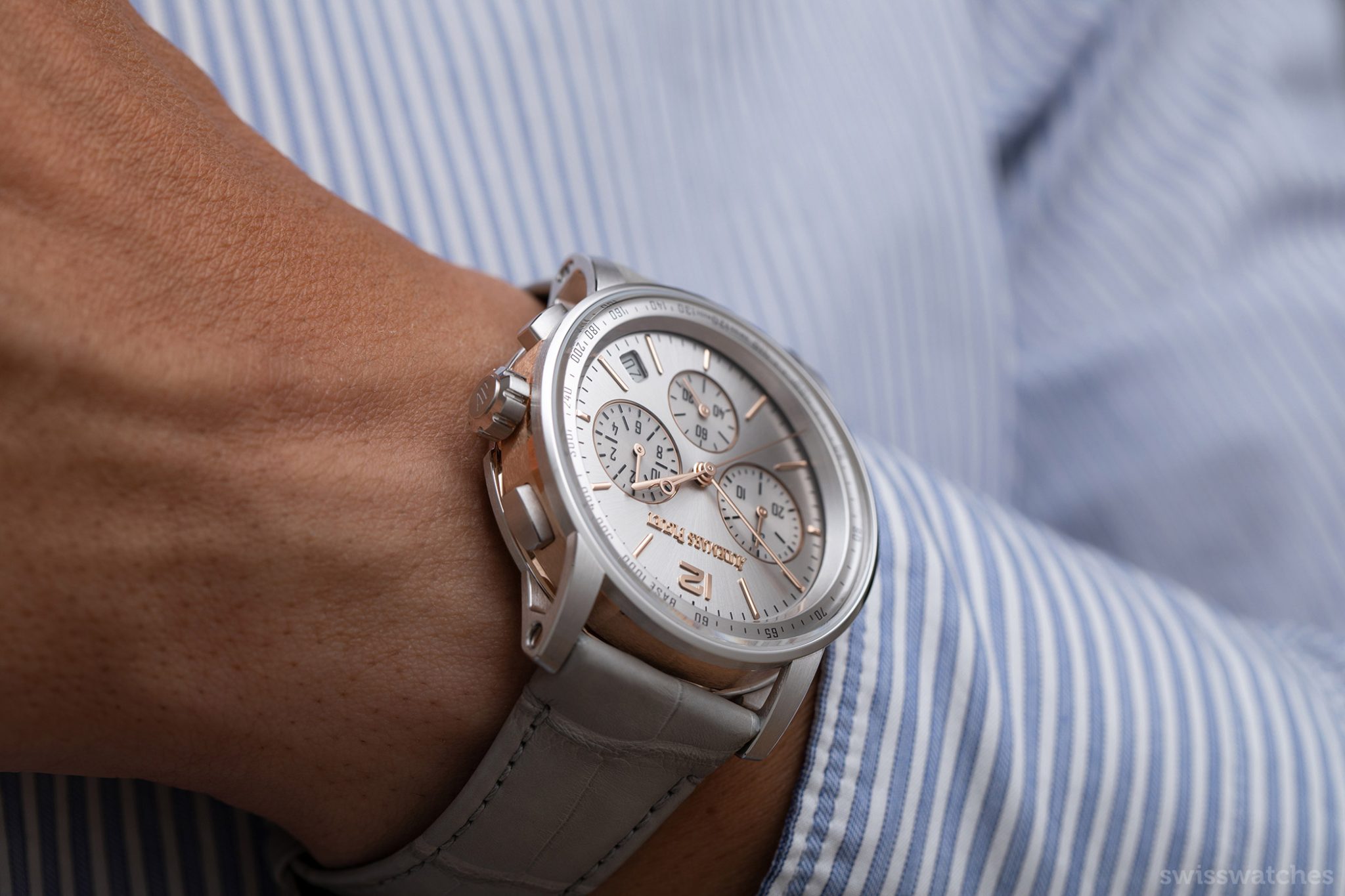
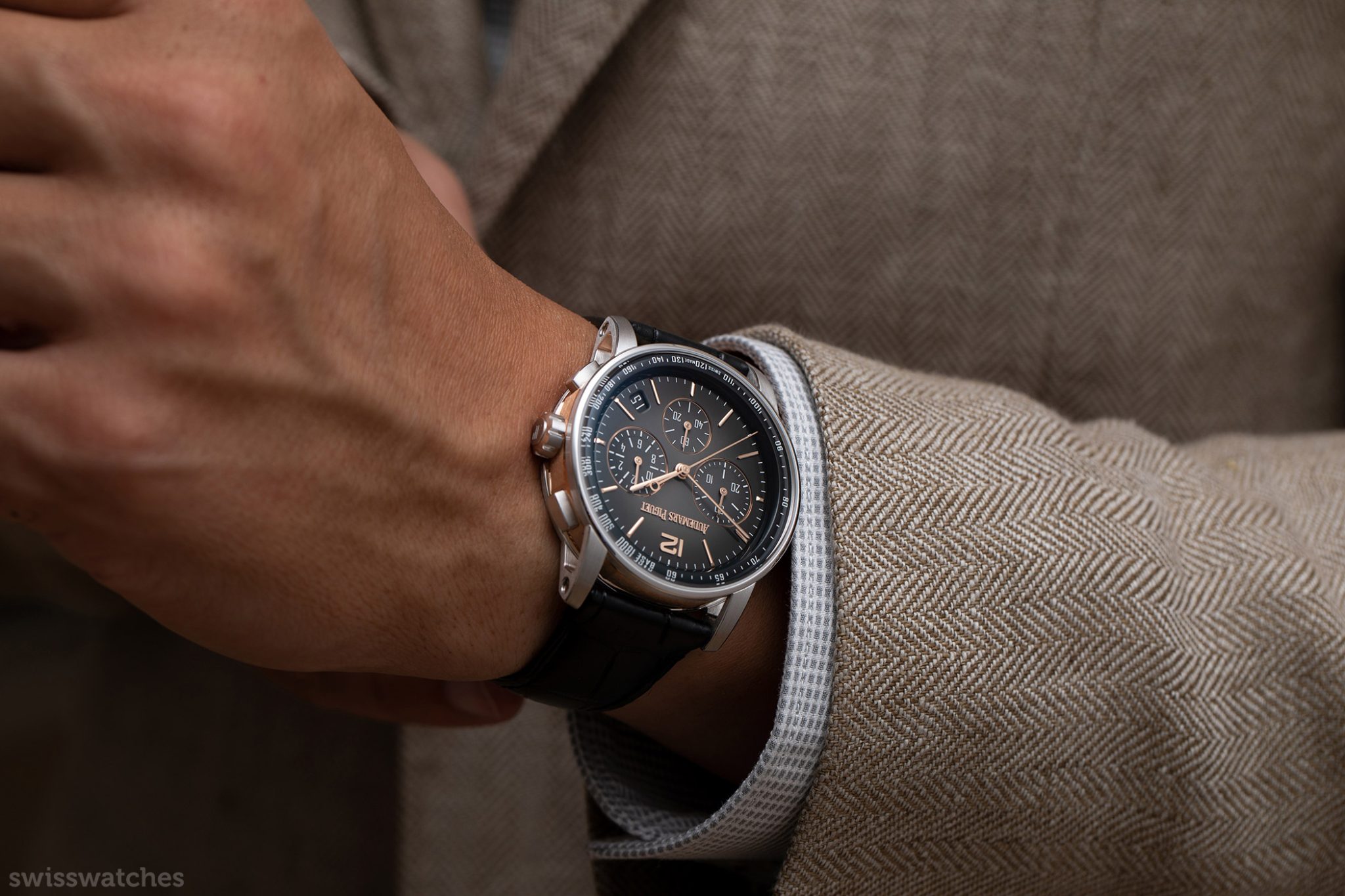
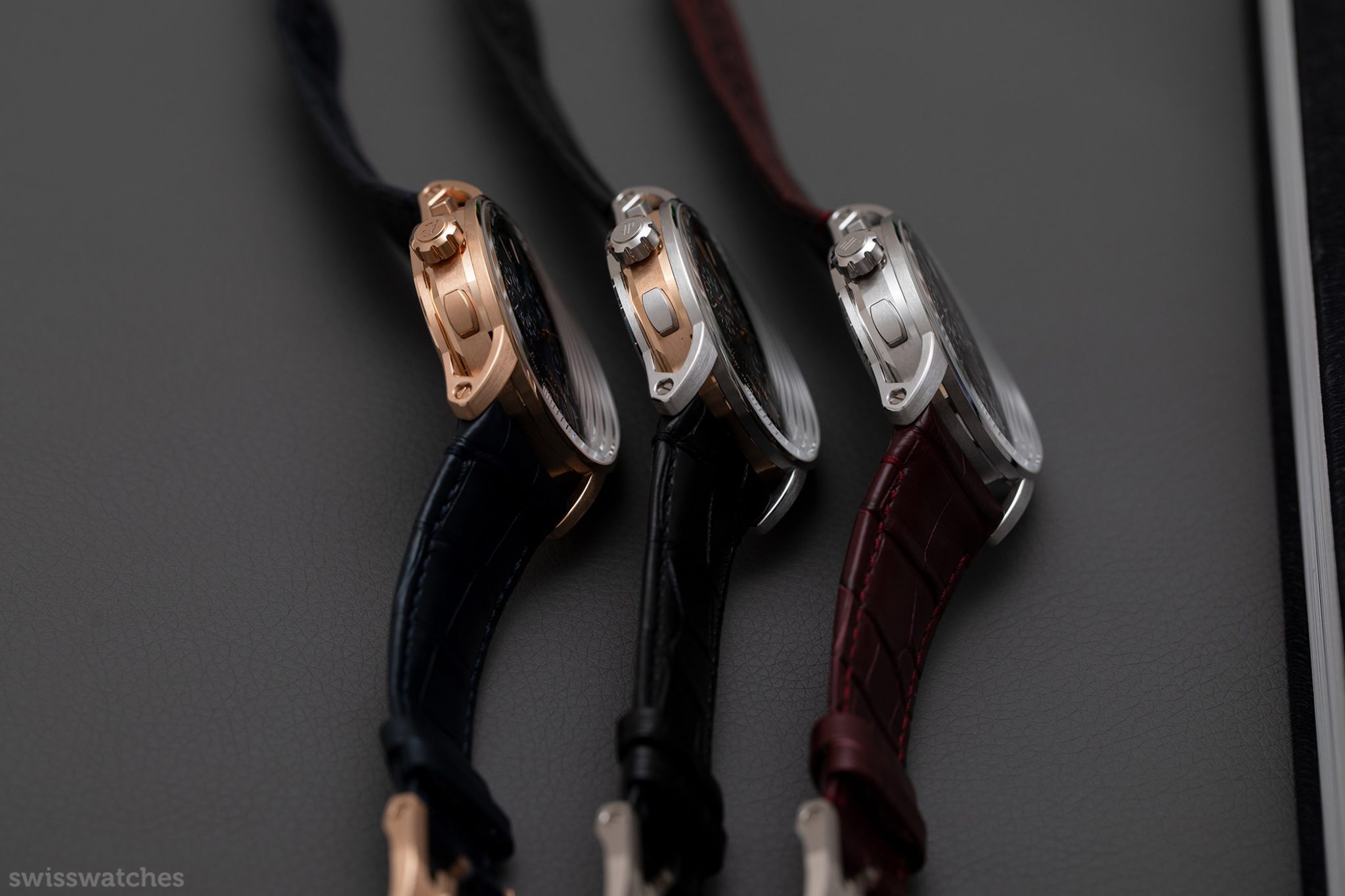
What’s more, it’s important to look at the bicolour cases from a collector’s perspective. Two-tone gold cases are extremely rare in the history of Audemars Piguet’s wristwatches – for example, out of the 550 wristwatches produced and sold between 1882 and 1969, only eight examples combined two types of gold – with white-gold and pink-gold combinations being particularly unusual. That said, they are gradually becoming more common, and it seems that the two-tone gold combinations are something that the horology house is now prepared to work with more frequently.
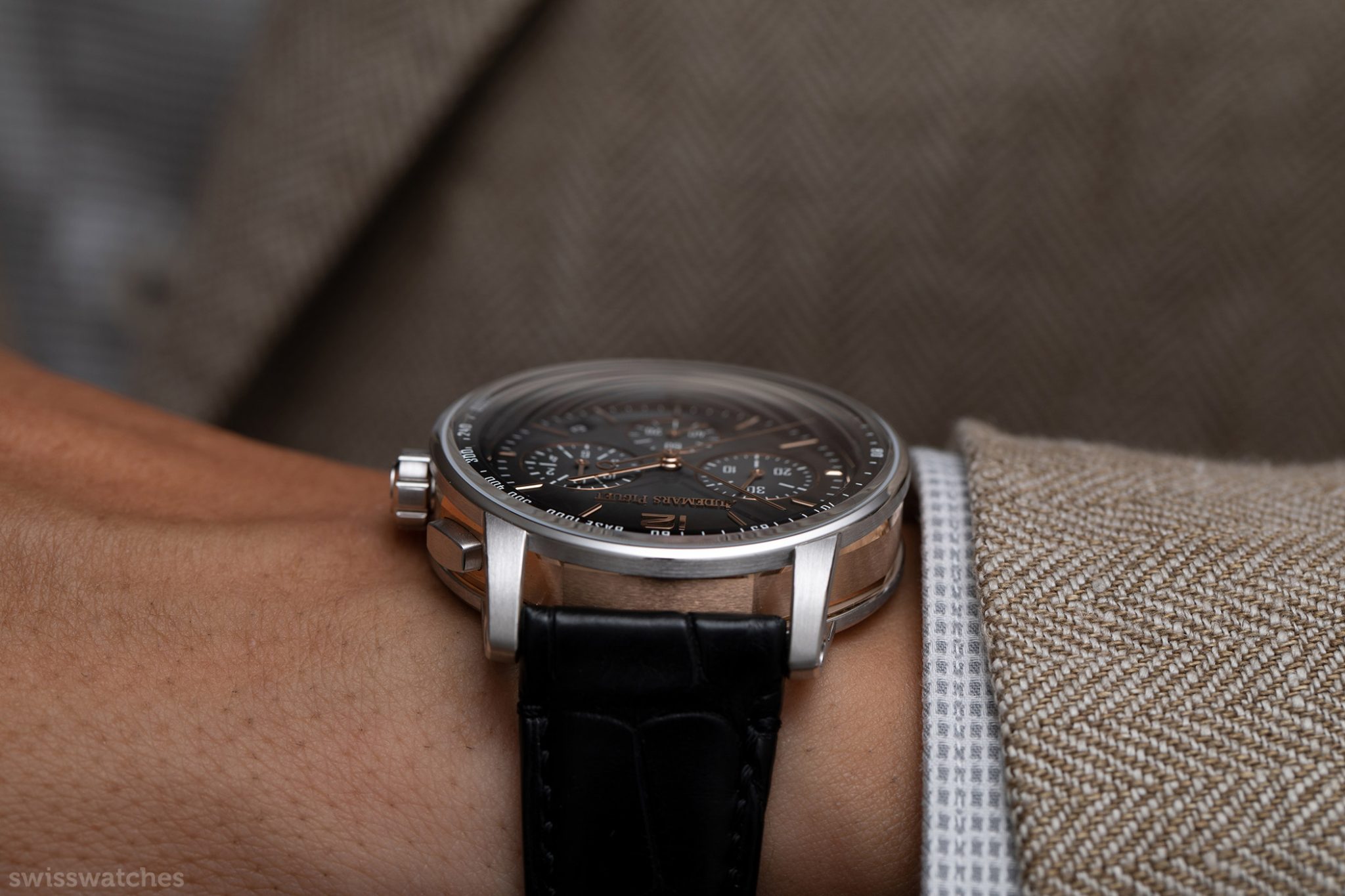
Interestingly, there was actually a two-tone CODE 11.59 released last year – the white gold and pink gold Audemars Piguet CODE 11.59 Tourbillon Openworked Only Watch Edition. It sold for no less than one million Swiss francs. Secondly, the lauded [Re]master01 Selfwinding Chronograph released earlier this year featured the unusual combination of pink gold and stainless steel. Both AP watches were likely key factors in the creation of the bicolour CODE 11.59 models this year.
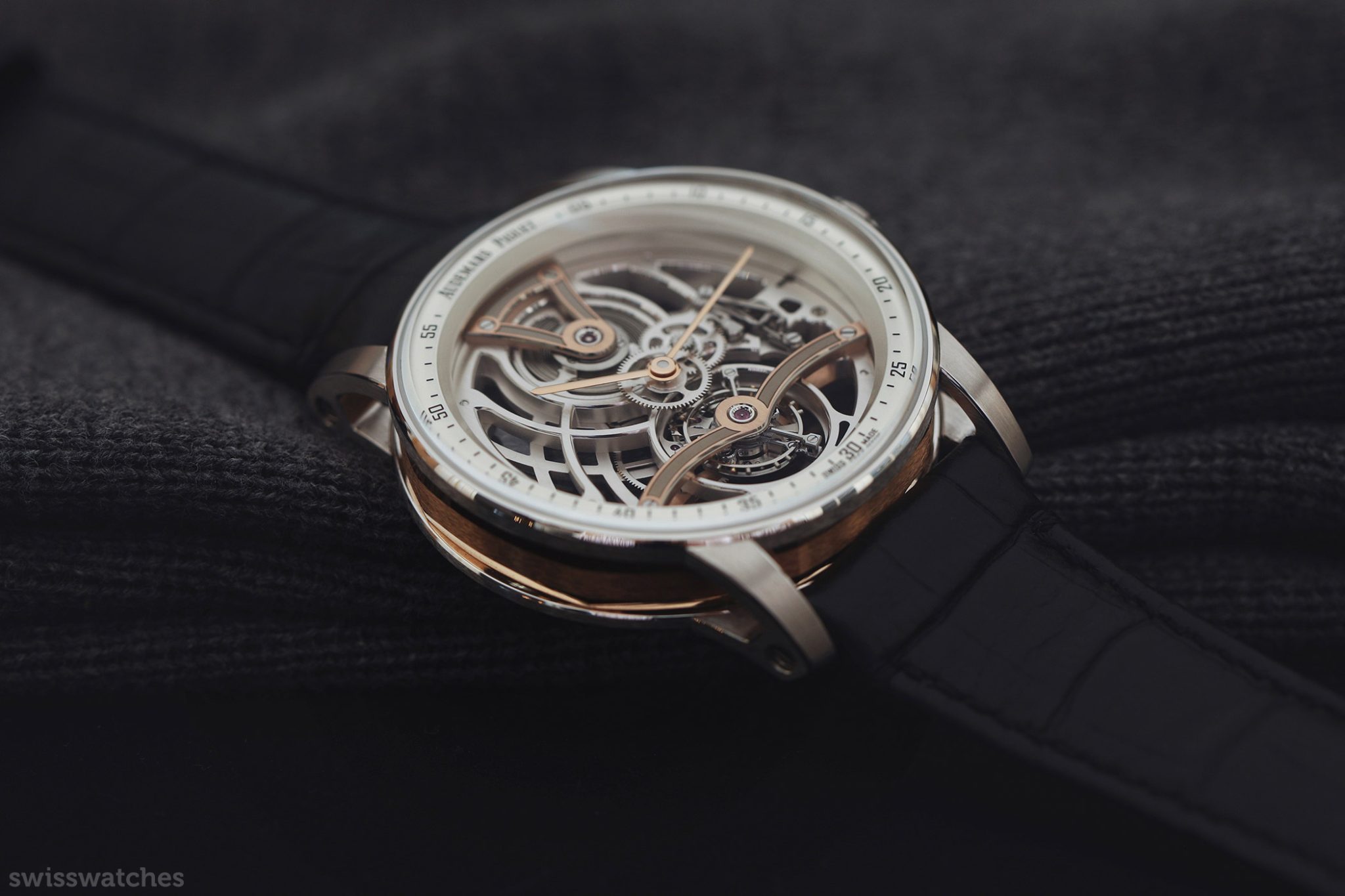
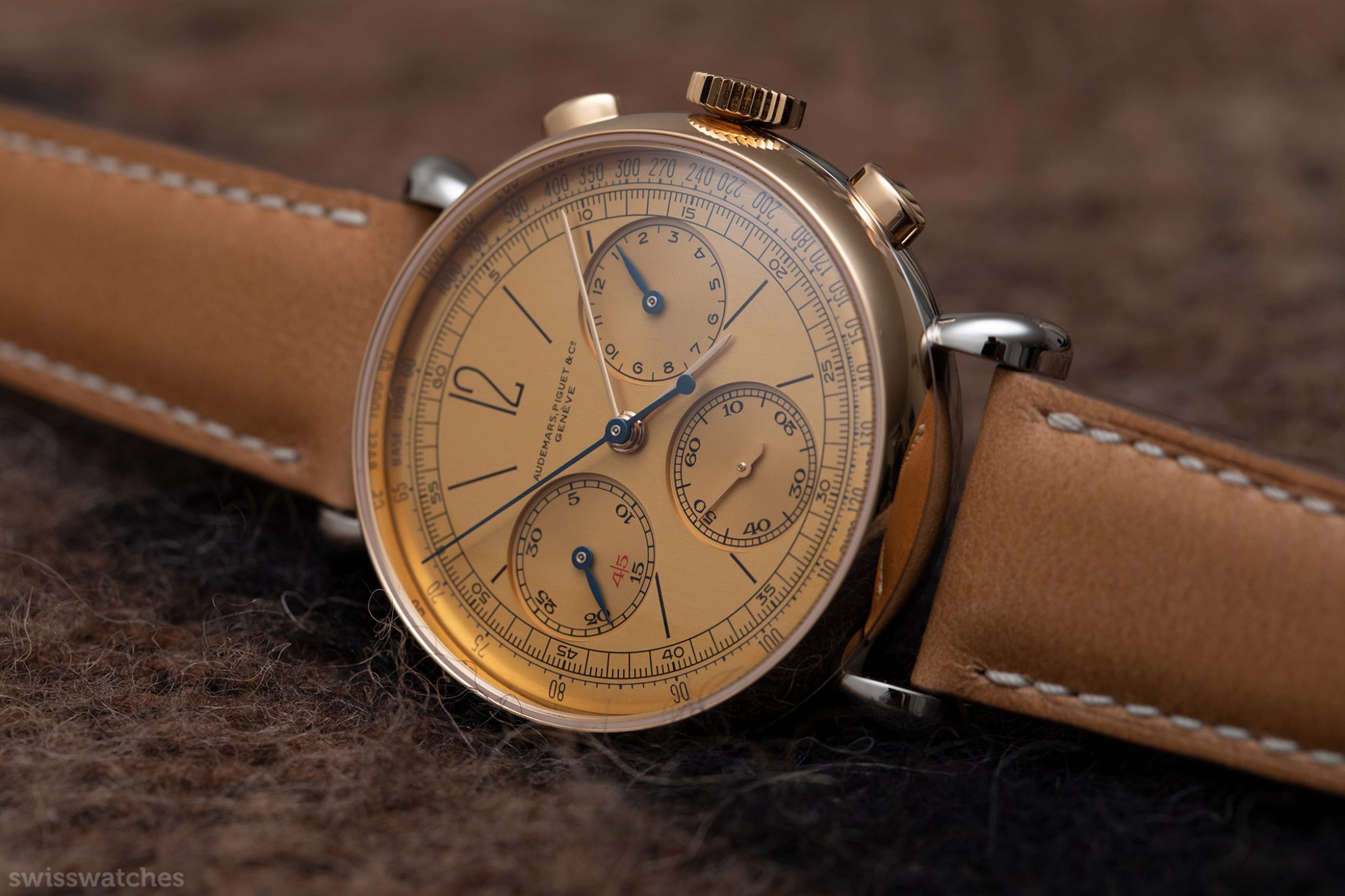
Only Watch Edition (left)
[Re]master 01 Selfwinding Chronograph (right)
Meanwhile, the remaining six watches use only one case material – to do otherwise would be chaos, given the bright, bold dial colours. The burgundy dial watches are housed in an 18-carat white-gold case, while the purple and blue versions use 18-carat pink-gold. The applied hour markers and hands match the case material. On this note – the Arabic numerals take their inspiration from a 1940s minute repeater – a nod to the brand’s roots.
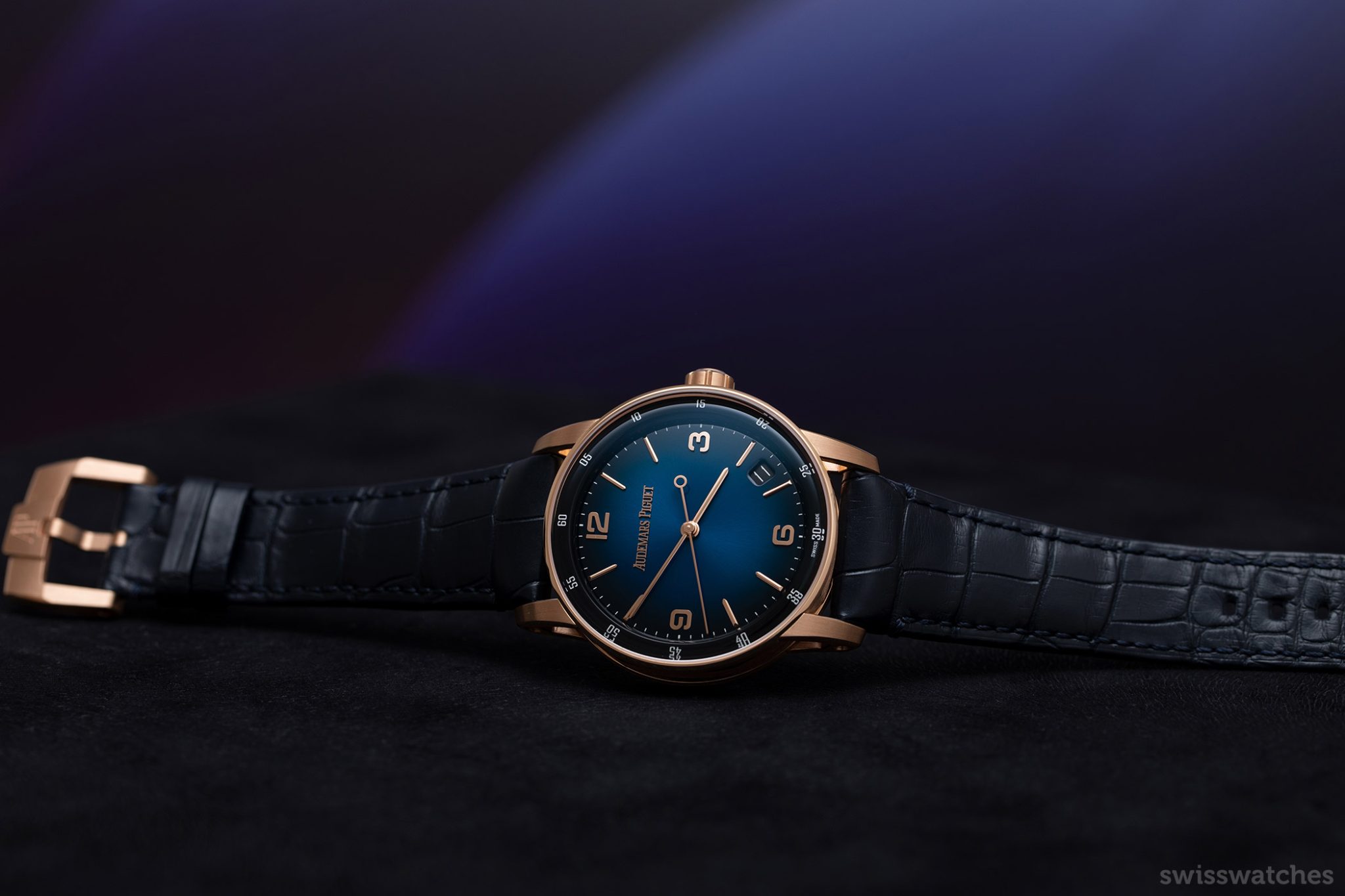
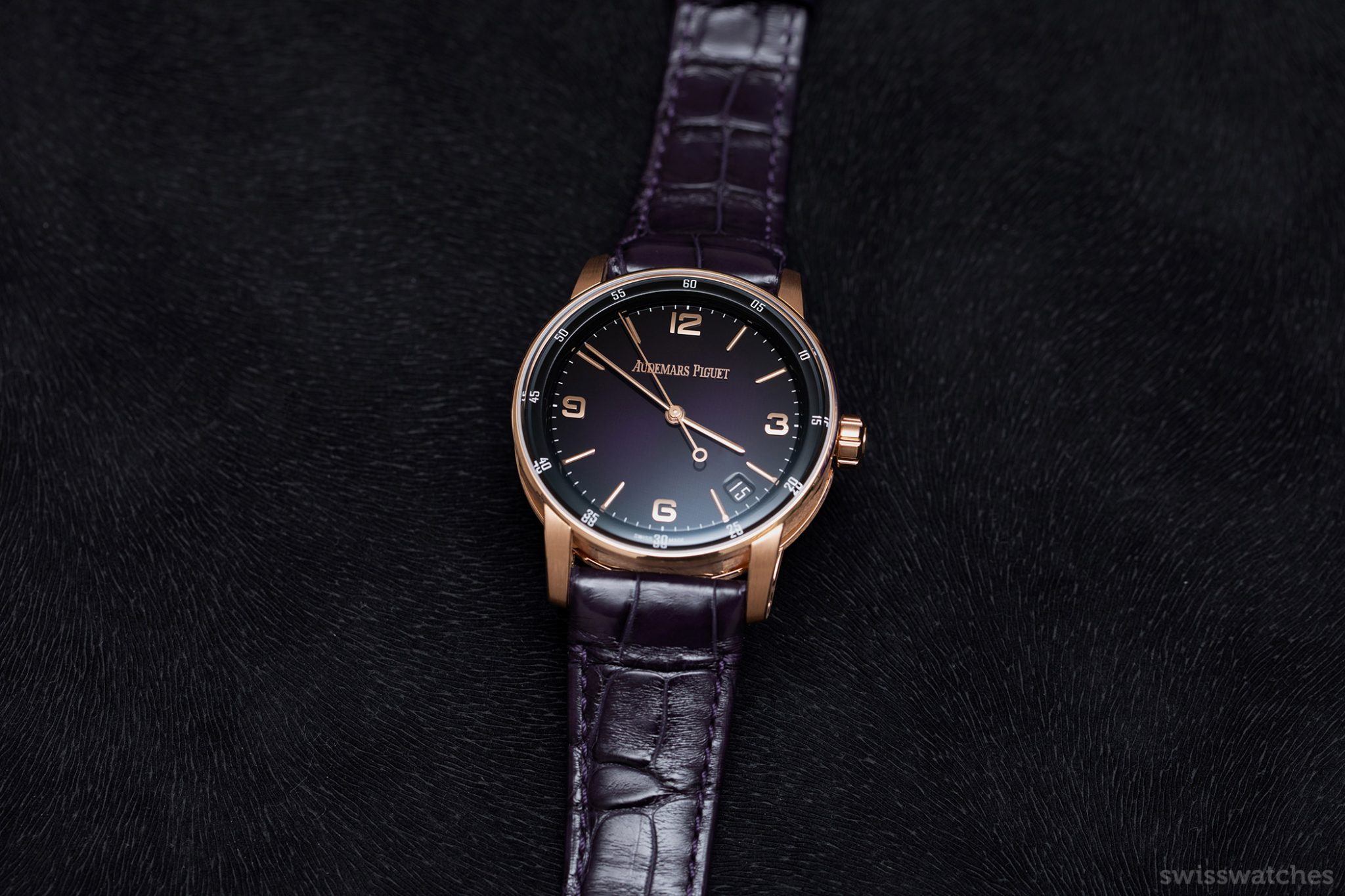
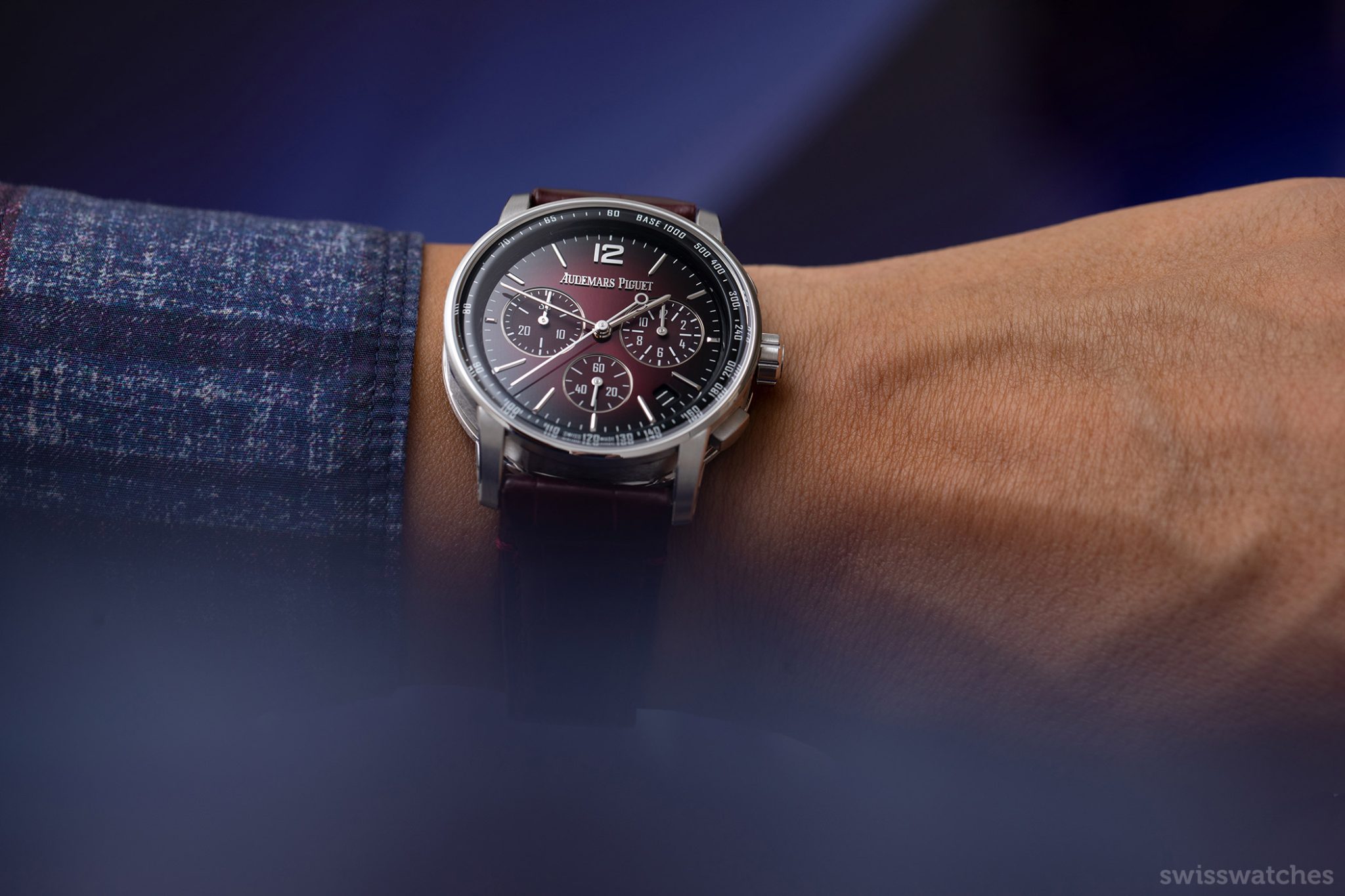
CODE 11.59: The Highlights
As mentioned, Audemars Piguet claims to have introduced the CODE 11.59 collection with the hope of demonstrating the manufacture’s long heritage of design experimentation. Perhaps this is a reason for the watch taking over half a decade to create. The watch explores several new innovative watchmaking methods, from its unique case shape to the unusual layering method used for the dial’s logo.
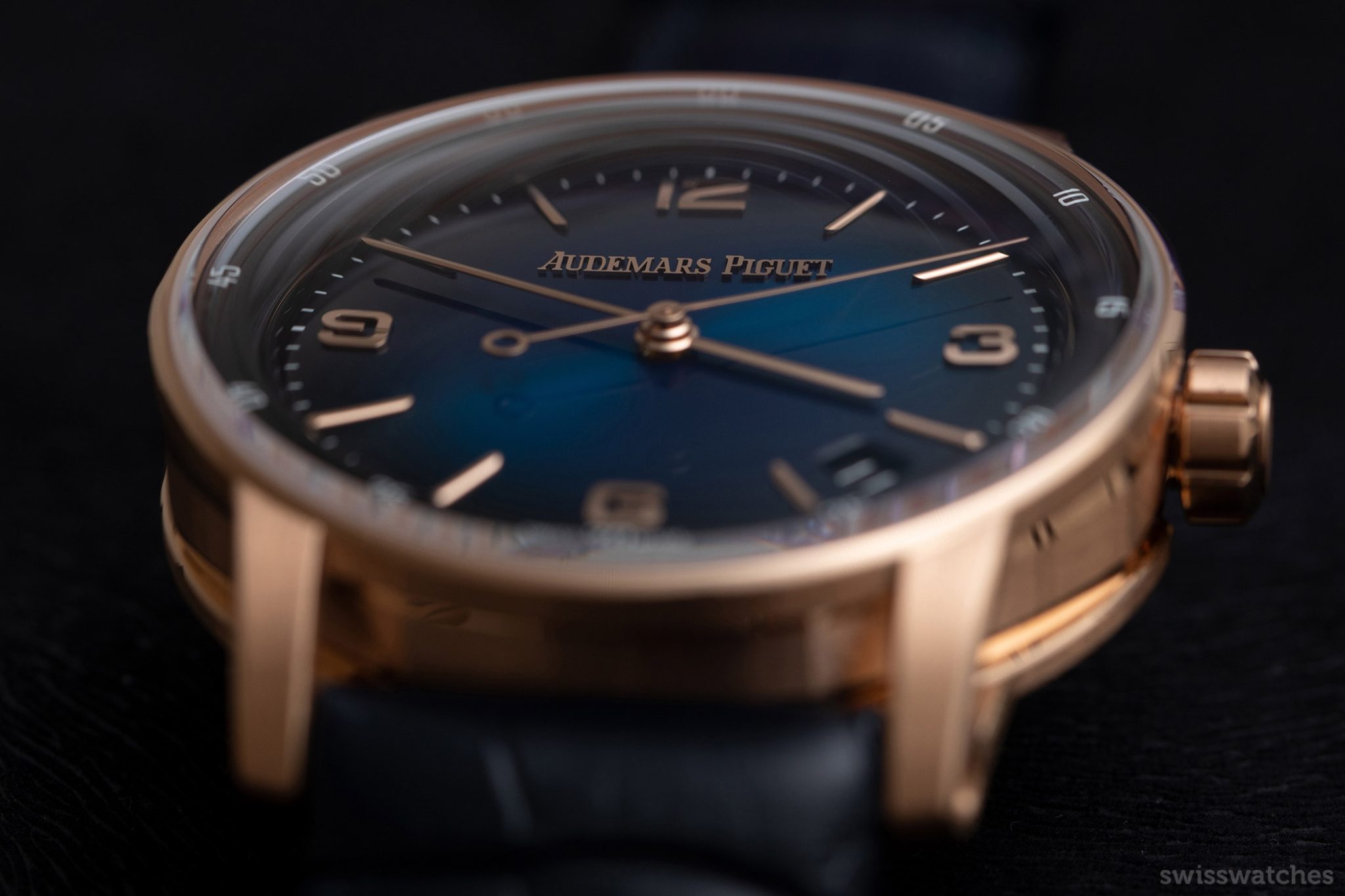
The Case: “Classic by nature and unconventional by design”
The CODE 11.59 by Audemars Piguet‘s case, with its juxtaposing geometrics, is a defining feature of the CODE 11.59 by Audemars Piguet watches. According to Bennahmias, the team went through roughly 25 different designs, plus a number of different internal and external designers, before landing on the “round” case’s design.
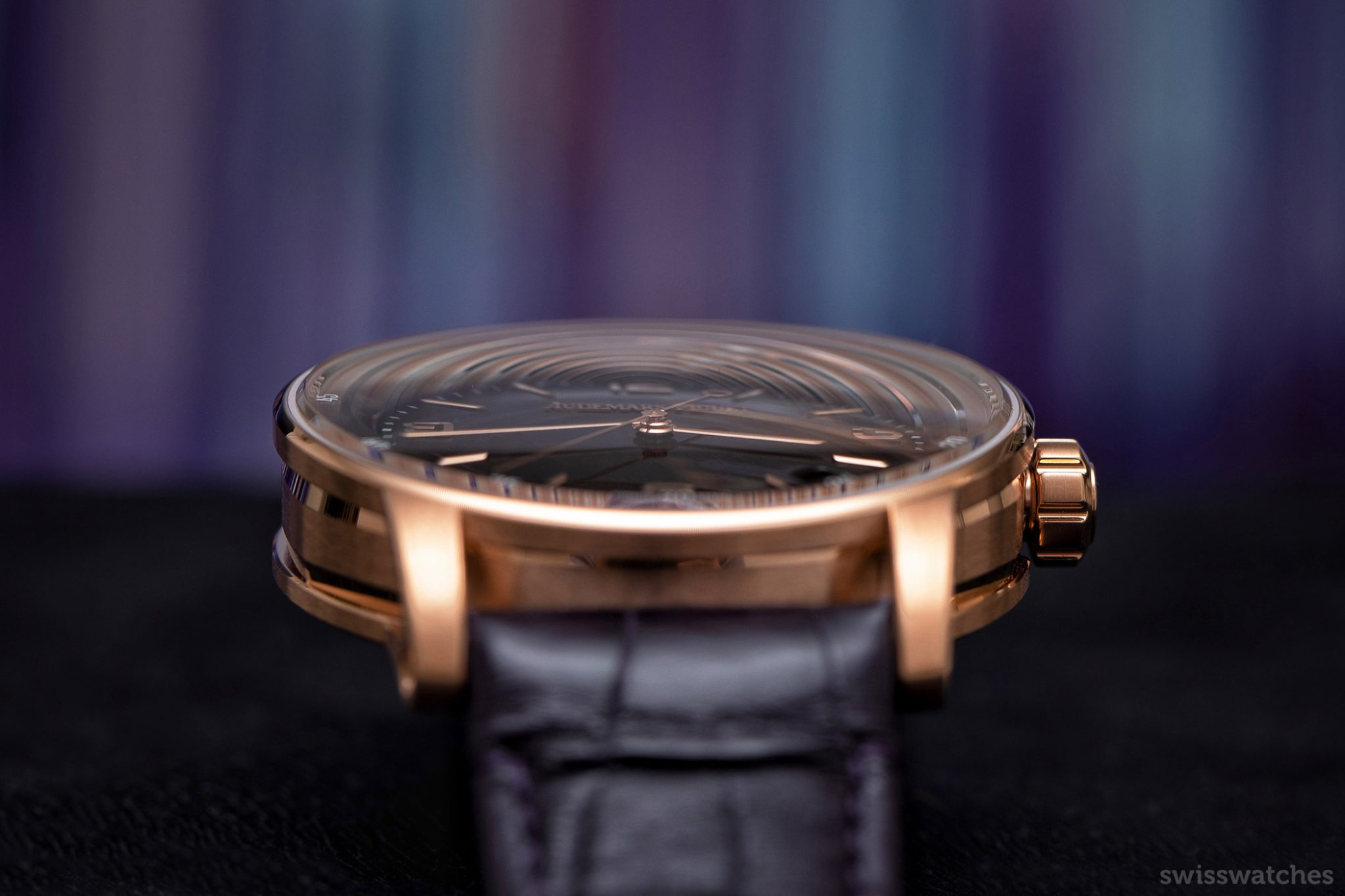
Creating the three-piece case of the CODE 11.59 by Audemars Piguet – most easily visible on the two-tone versions – is what watchmaking is all about; pushing boundaries, and not being afraid to experiment. The 41 mm case integrates an octagonal middle case – which perhaps nods to the brand’s first octagonal watch in 1917 – with a round, extra-thin bezel and stylised arched lugs. As mentioned, the bi-colour versions definitely draw attention to this unusual design, which might be missed at first glance.
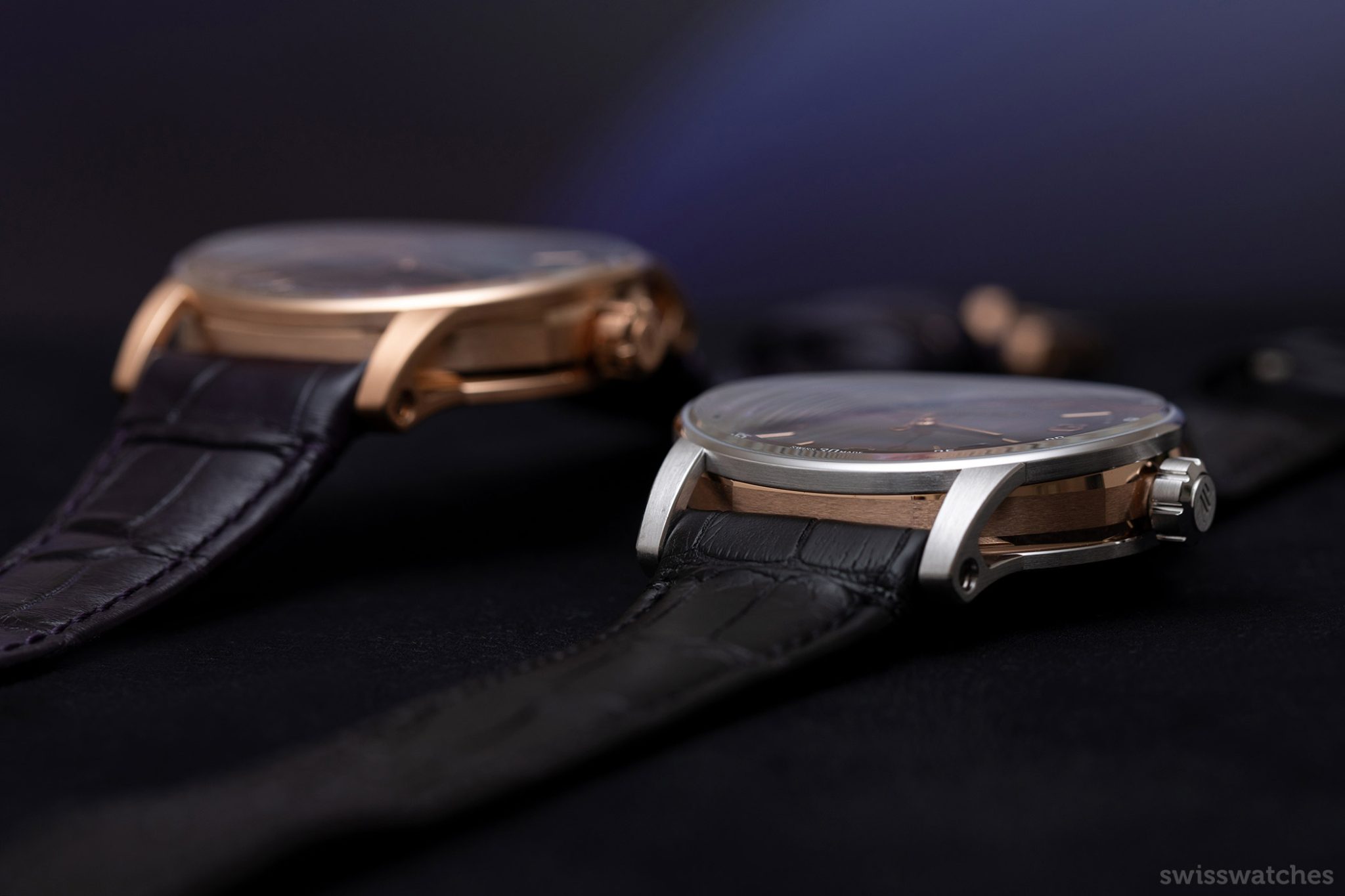
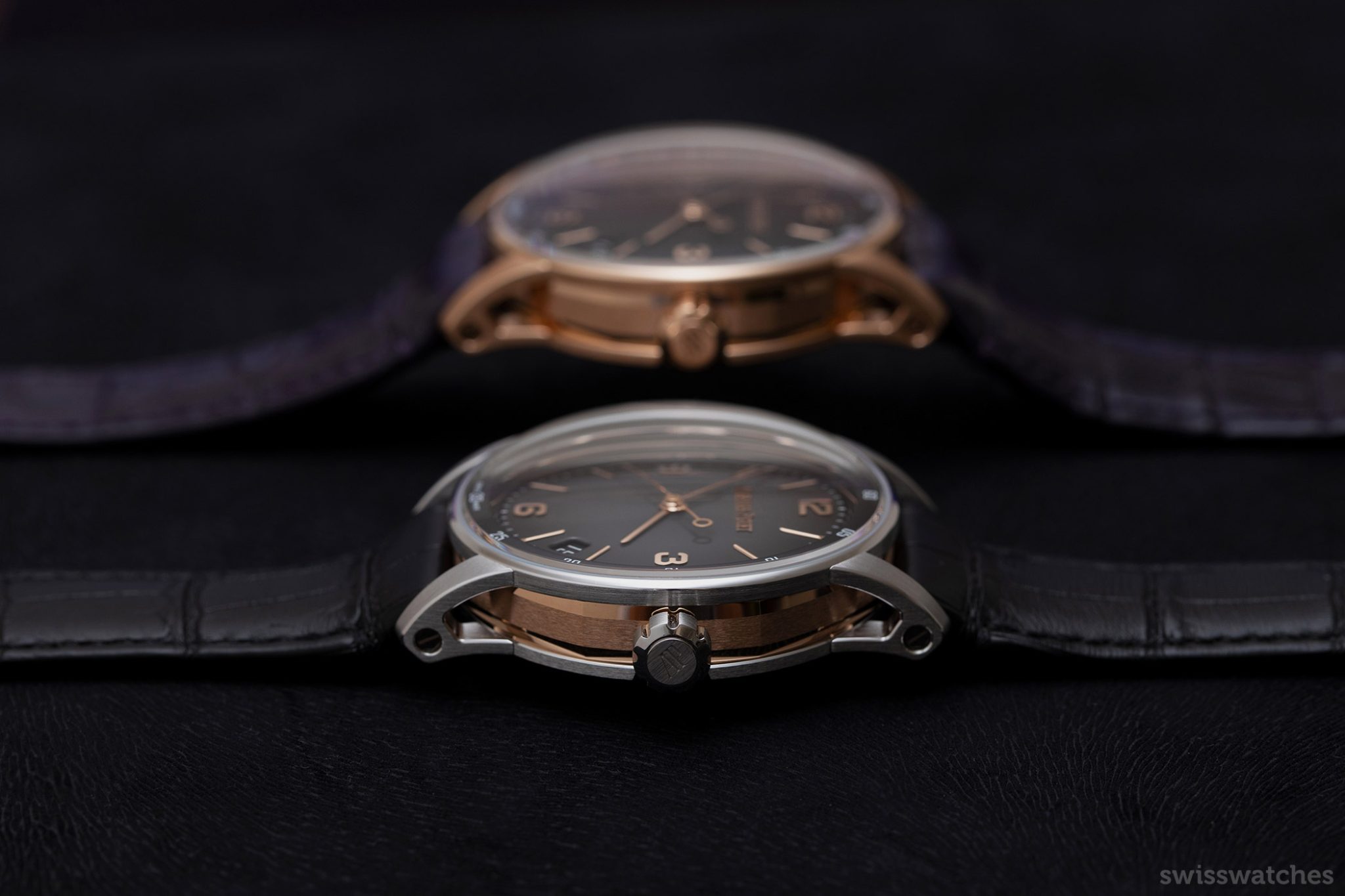
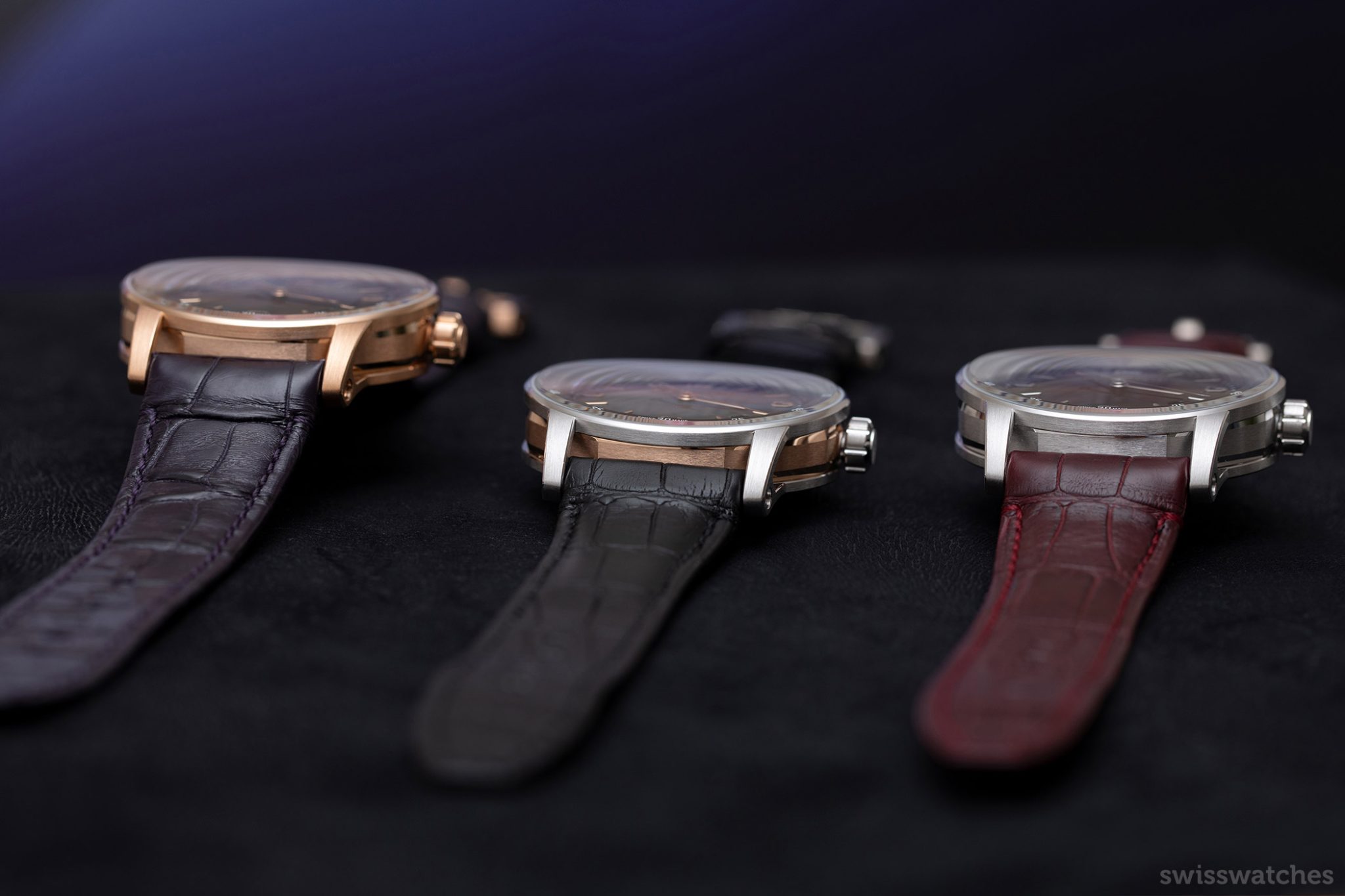
The case’s lugs required a new production process that moved away from traditional case-making. The openworked lugs, which are soldered by hand with a soldering paste, combine a total of five different axes. Firstly, they were welded to the upper bezel in order to leave the octagonal middle case unobstructed from view. Secondly, the upper lugs are soldered to the extra-thin bezel, while the bottom lugs simply lean against the caseback. To given an idea of how this measurement looks in real life: it leaves enough space for a piece of paper to be slid into the gap between the case and the lugs, essentially leaving the lugs suspended in the air.

Unusually, the case material alternates between bevelled, satin-brushed and polished parts. Due to the multiplicity of the case’s angular and rounded surfaces, this is no small feat. Therefore, Audemars Piguet uses a highly specialised team comprising of six polishers and five satin-brushing specialists. What’s more, the polishers’ jobs are further complicated due to the details on the case itself – the parts cannot be even slightly altered, as this would compromise the watch’s alignment.
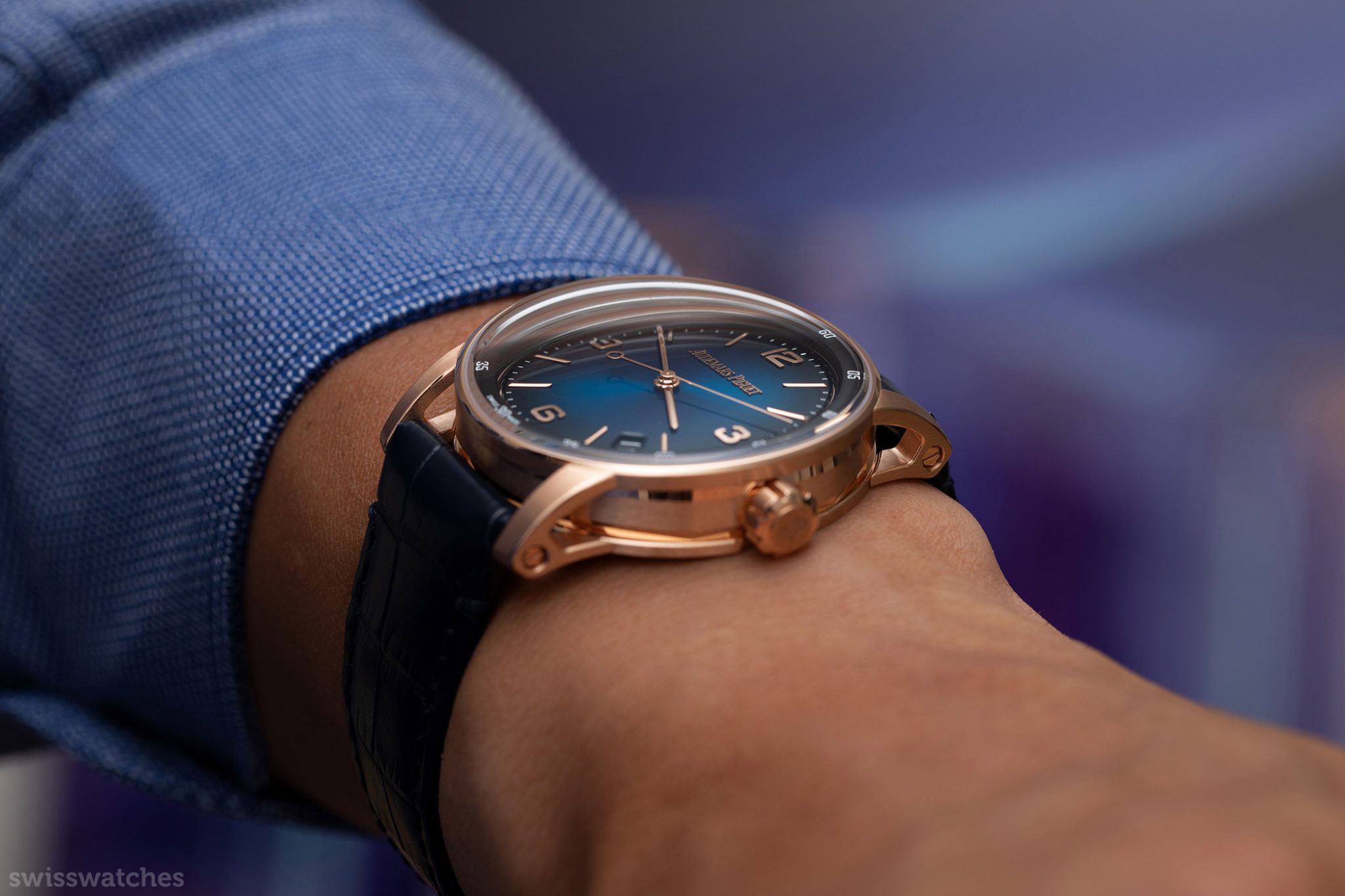
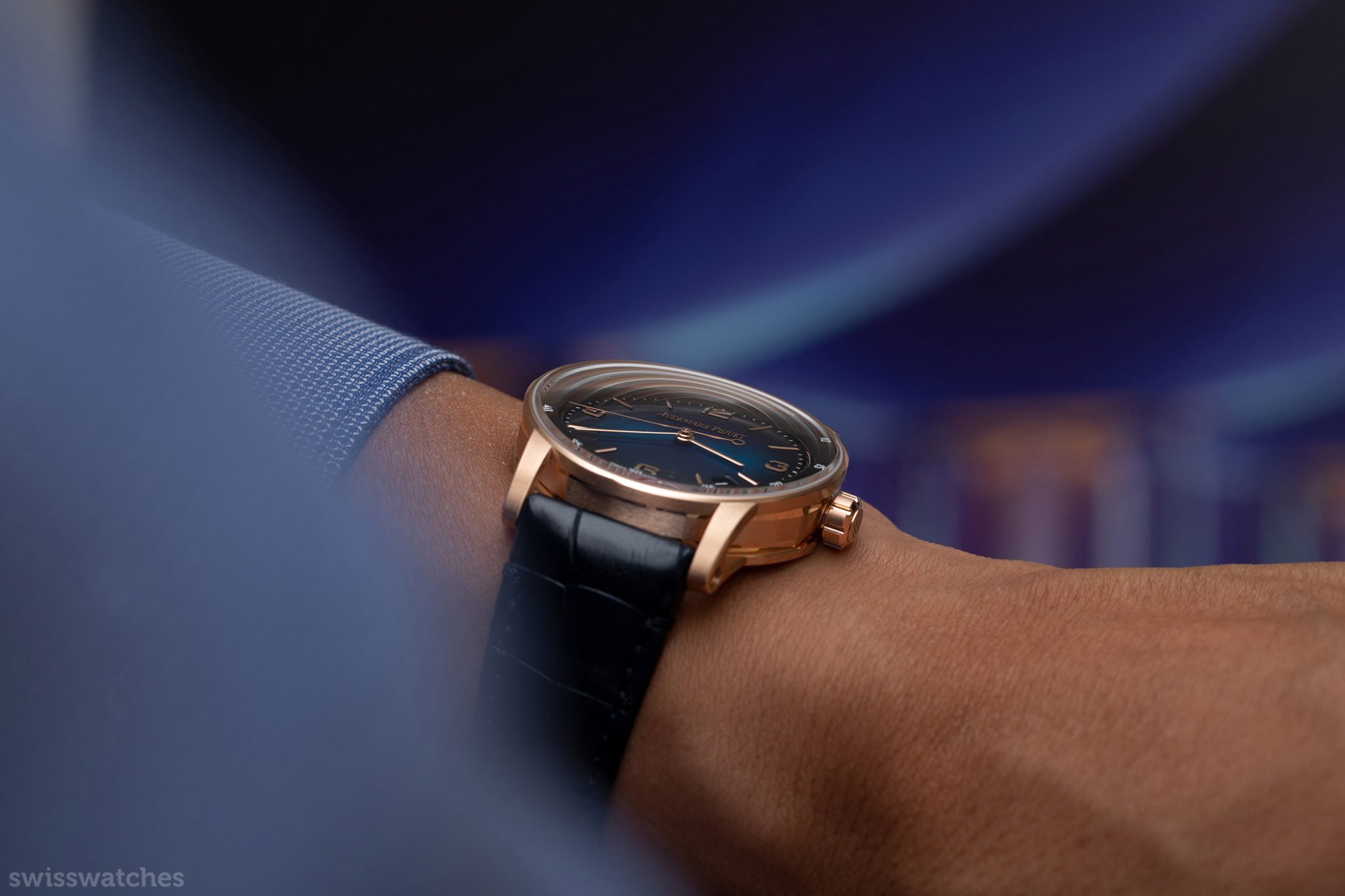
All in all, the unusual combination of a round case, which somehow is simultaneously octagonal, is not only unique but also a key element of how the CODE 11.59 could become a piece with its own identity in the future. It’s also designed to be a functional case – its design aims to fit well with any wrist size, thanks to its curved design.
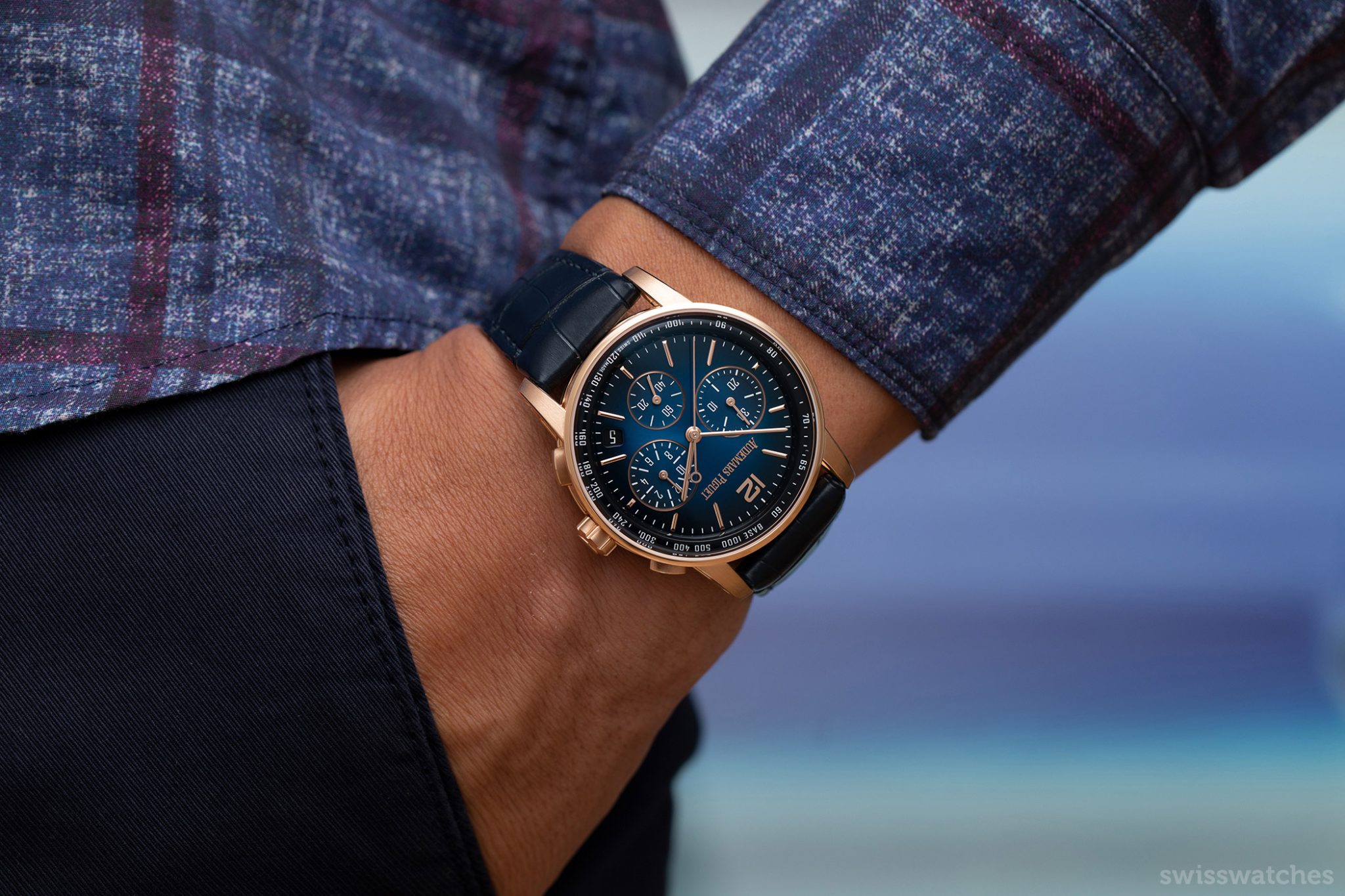
The Dial
The dials within the collection are all made by one single supplier, due to the intricate and highly artisanal work required to create them. This is partly due to the choice to showcase lacquered dials, which then have to accommodate a rather unusually set logo.
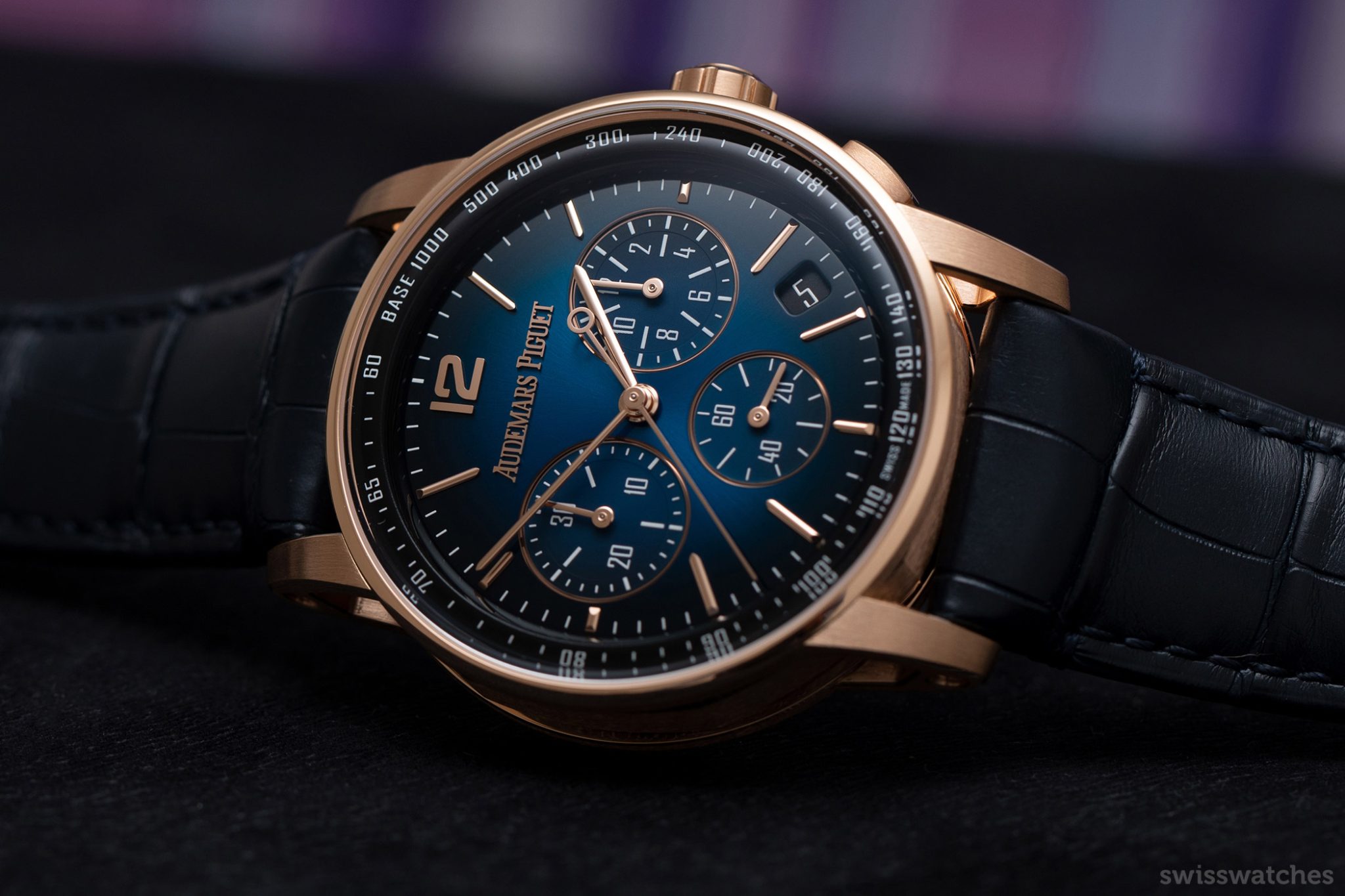
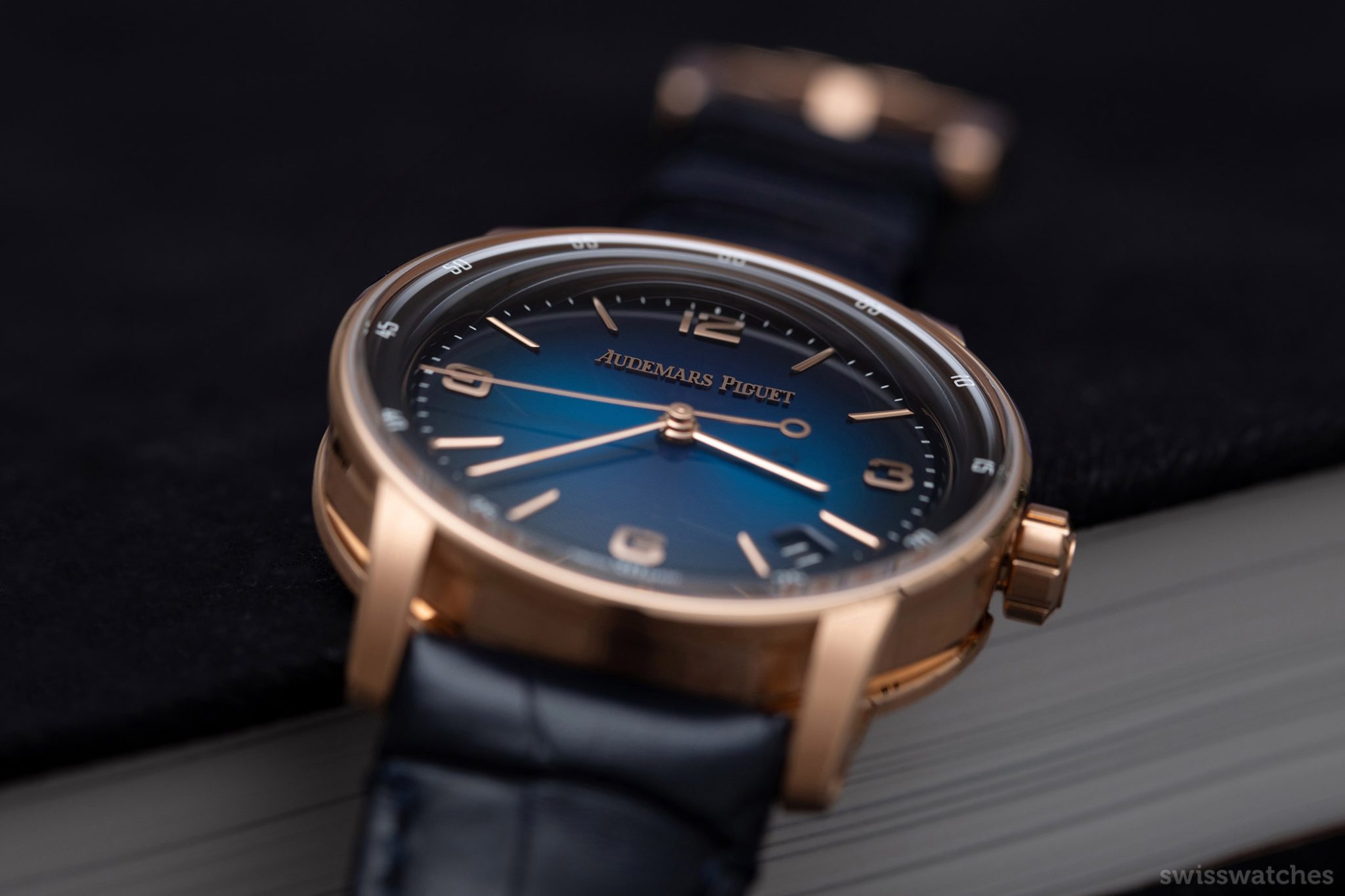
The 12.5 mm-long Audemars Piguet logos are made in galvanic growth, a chemical process used to achieve micrometrical precision. It is applied by putting thin layers of 24-carat gold on top of each other, creating a kind of 3D effect. While the process has been used by other watchmakers, Audemars Piguet is the first to use 24-carat gold in the process. This complicated implementation of the logo took around two years to develop, partly because the ‘A’s and the ‘U’s of the Audemars Piguet logo are so incredibly thin. What’s more, the letters are attached to each other by links that are approximately the size of a single hair.
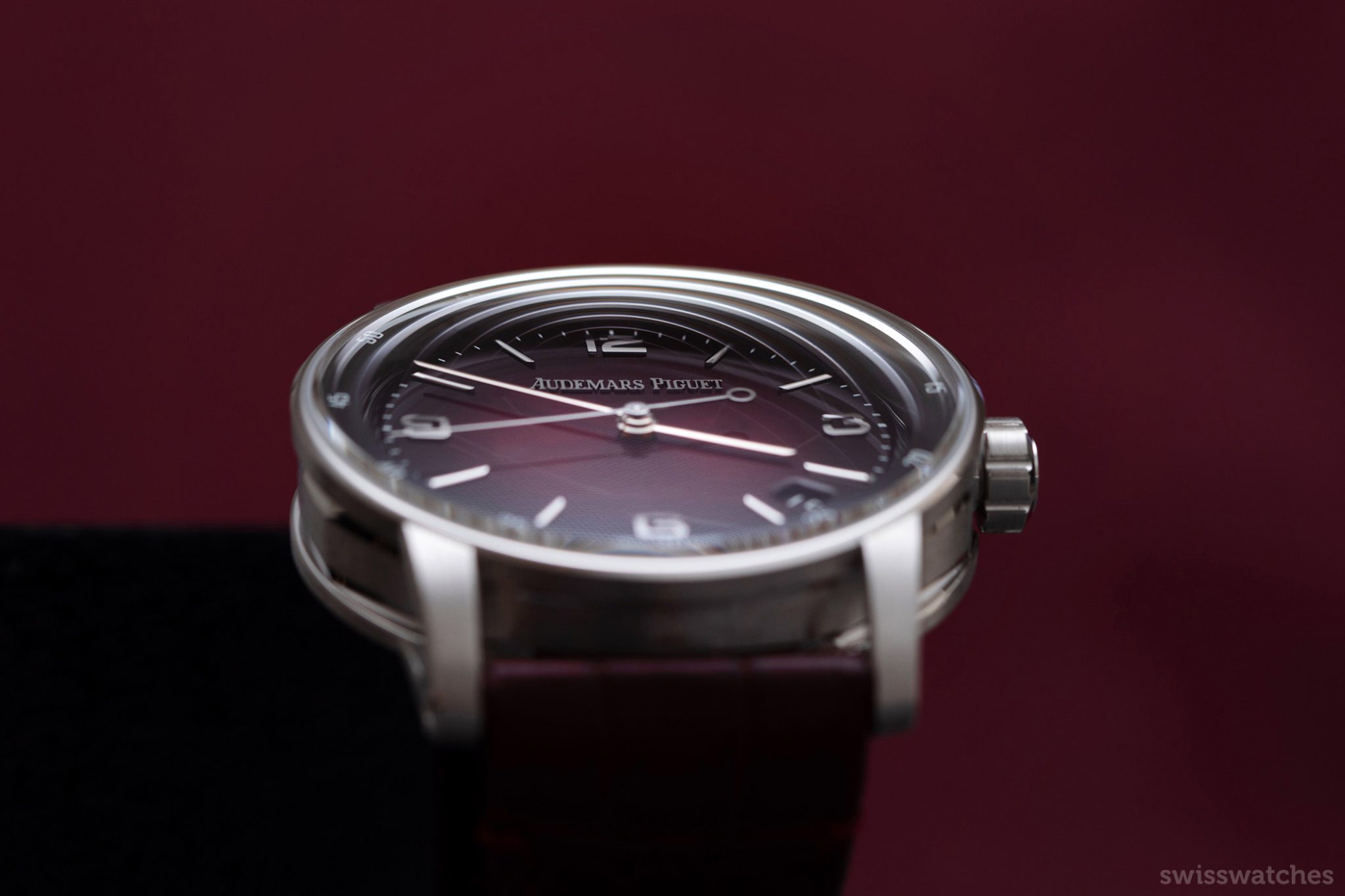
Unexpected Dimensions: The Crystal
As mentioned, the CODE 11.59 by Audemars Piguet bezels are extra thin. The reason behind this geometry is that the bezel needs to integrate the unusual sapphire crystal, which was, again, dreamt up just for this collection. The glare-proof sapphire crystal’s internal surface is domed, yet while its exterior is vertically curved from 6 to 12 o’clock.
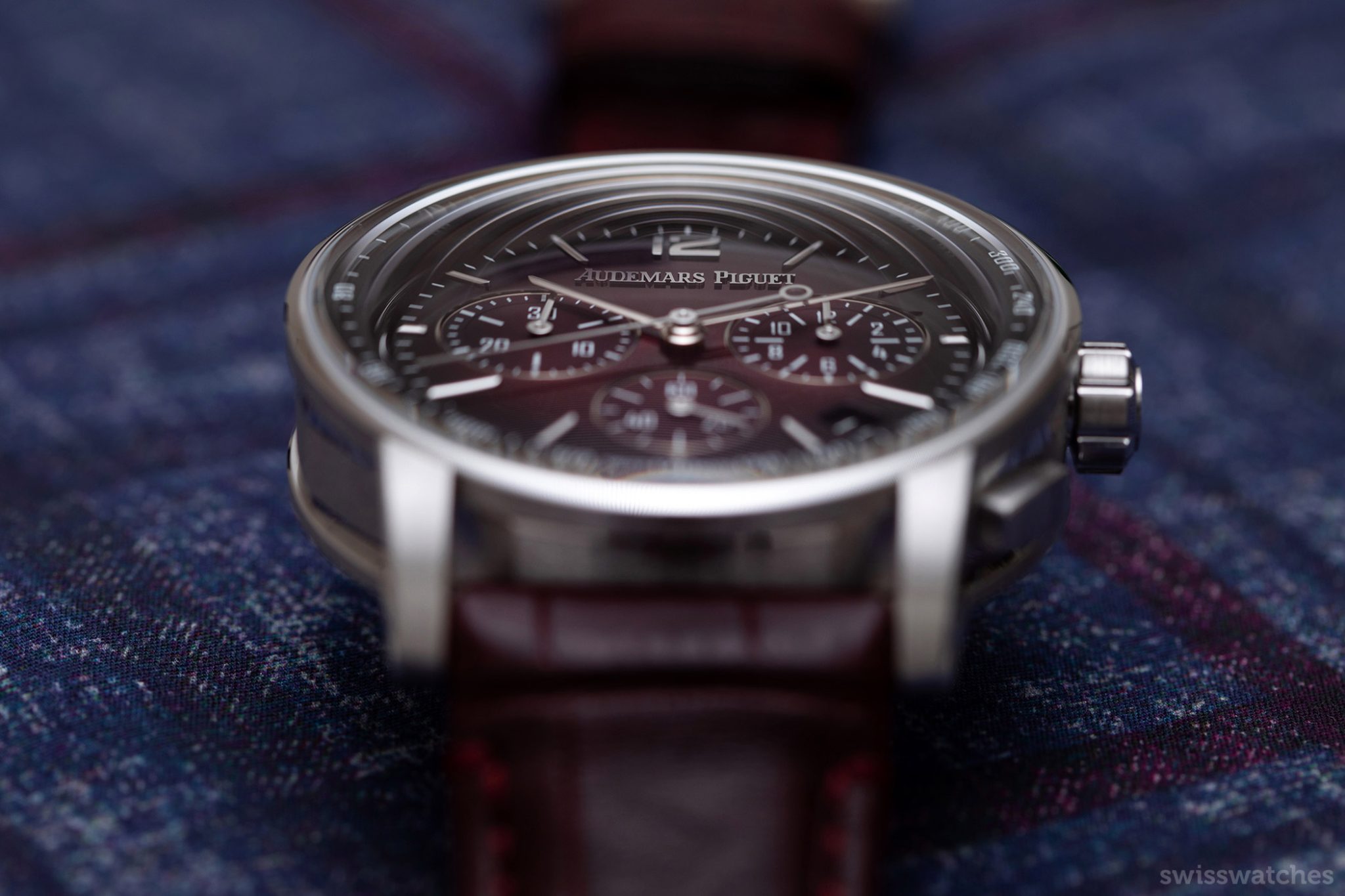
This arched profile was designed to provide the best possible readability on the dial. Clarity aside, it also means that the timepiece’s depth, perspective, and even light can be played with, as it is tilted and studied from contrasting angles and surfaces. It’s well worth seeing one in person, even if the watch isn’t your style – the execution of the crystal is a truly impressive design feat and very clear to see, even at a glance.
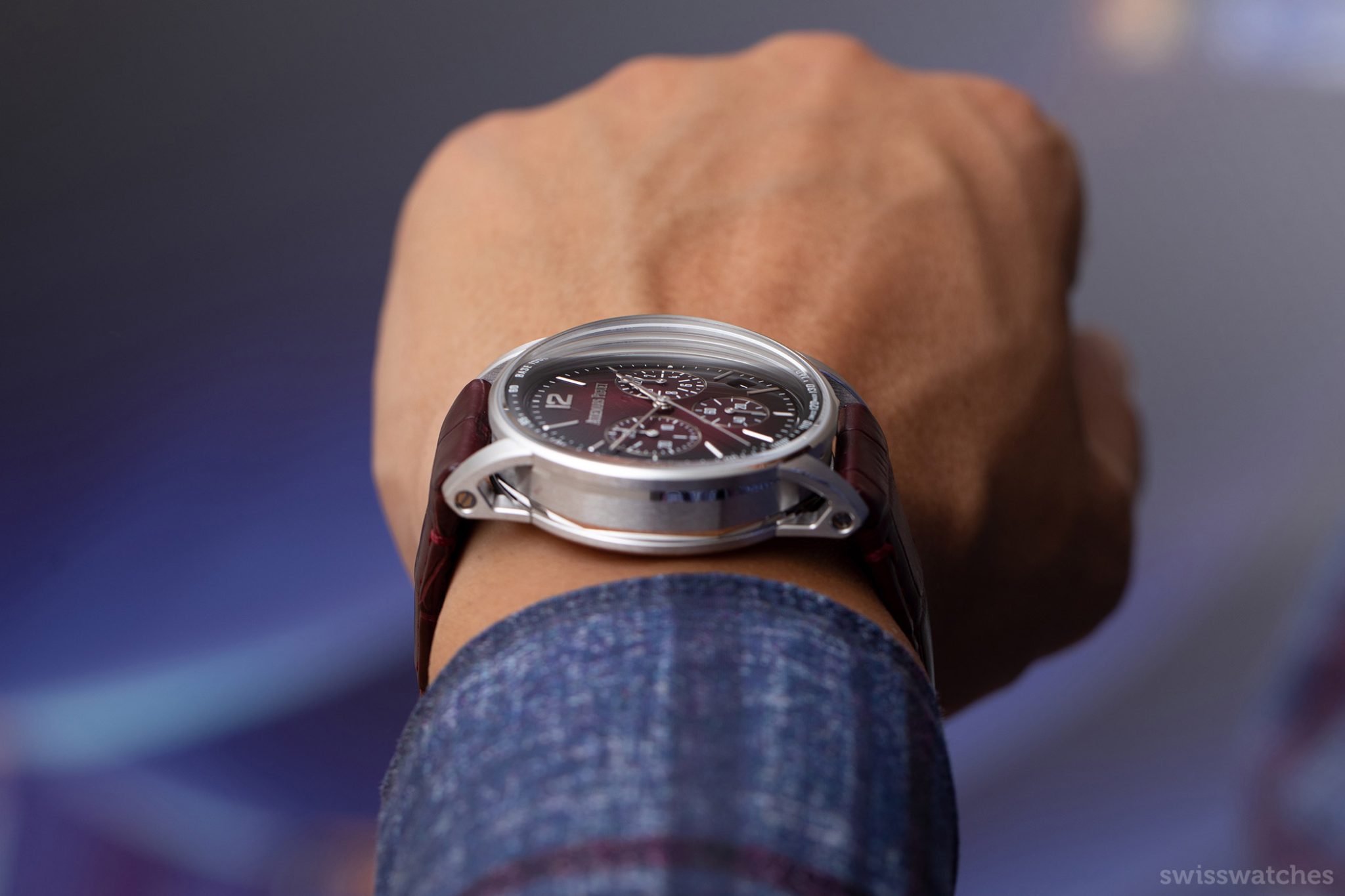
Specially Created: In-house Calibres
The movements of the Selfwinding model and Selfwinding Chronograph were developed specially for the CODE 11.59 by Audemars Piguet line. As with the case and dial, calibre development was no small feat – particularly for the self-winding chronograph models, which had been long-awaited by fans of the brand.
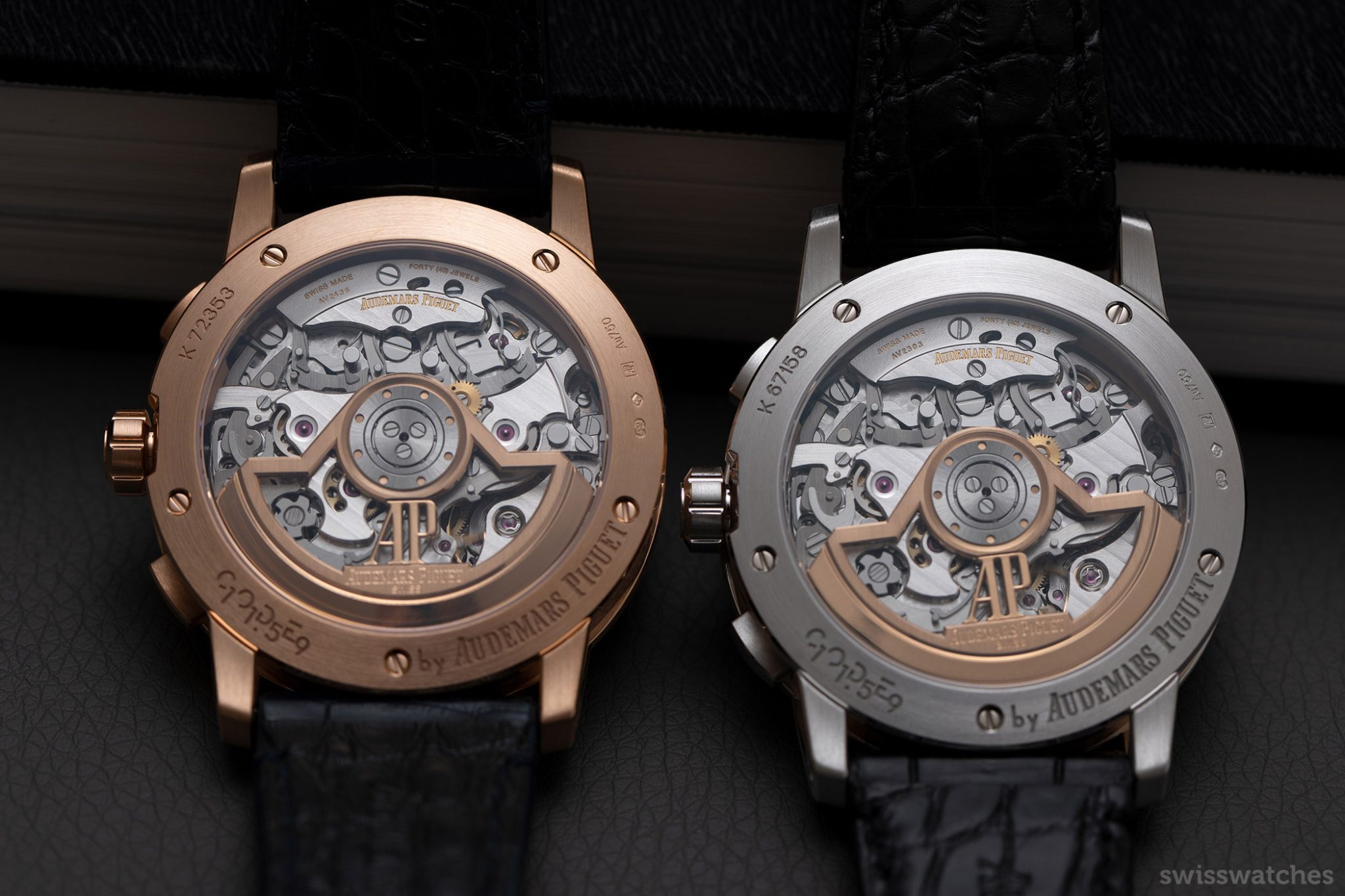
The chronograph models are powered by the in-house calibre 4401, an integrated chronograph with column wheel and flyback function that can restart the chronograph without the need to stop and reset it first. The movement, which measures 32 mm in diameter, also of course provides hours, small seconds, plus a date window. The calibre is also endowed with a patented zero resetting mechanism, which ensures that each one of the counter hands is reset to zero.
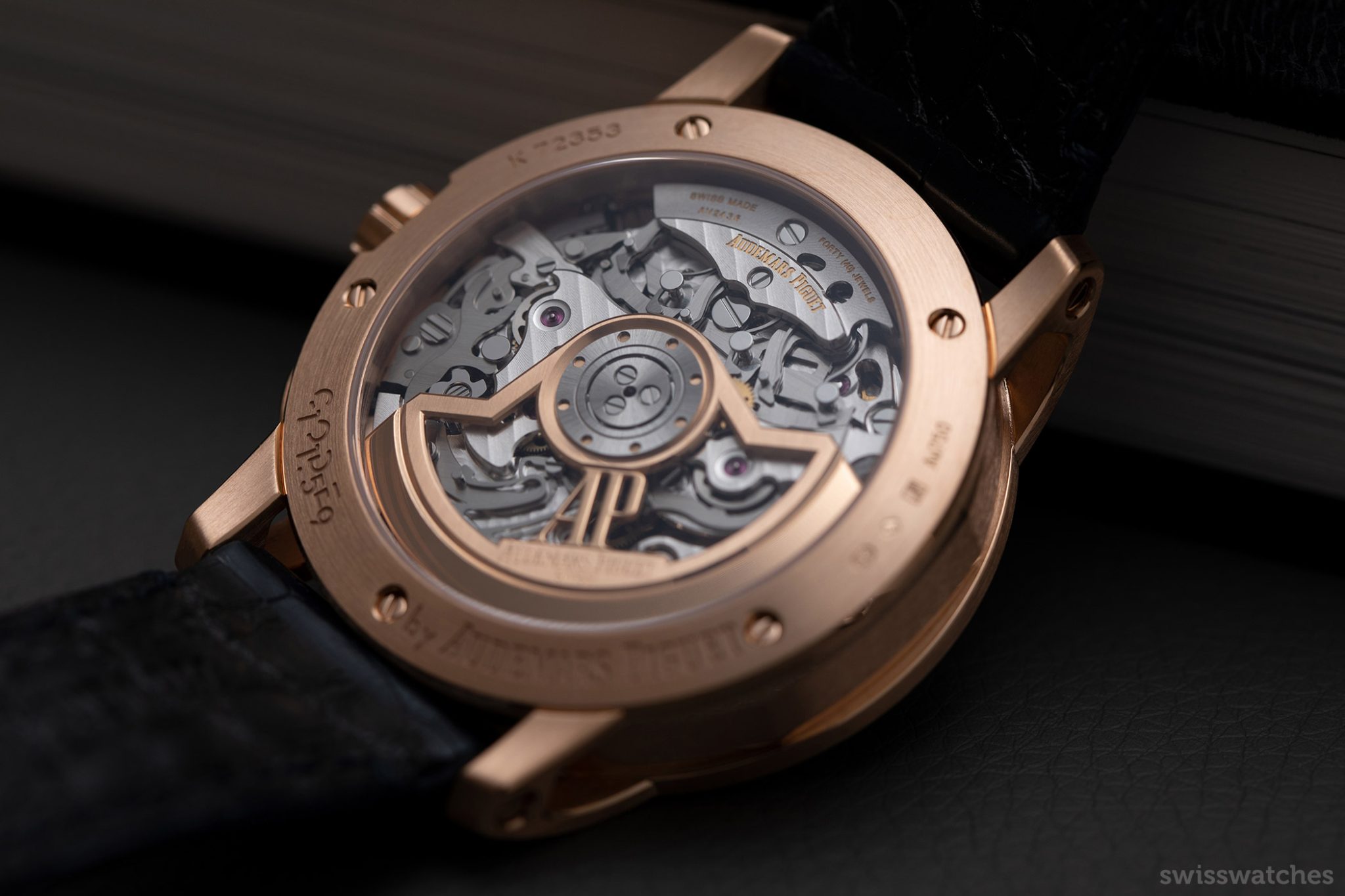
Furthermore, it is also equipped with a vertical clutch system that prevents hands from jumping when the chronograph stops or starts. Audemars Piguet was keen to show off as many of the 367 components and functions within as possible; parts usually hidden from view, such as the column wheel and the so-called “dance” of the chronograph hammers when the chronograph is reset to zero, are visible through the caseback, and even the oscillating weight in 22-carat gold is open-worked.
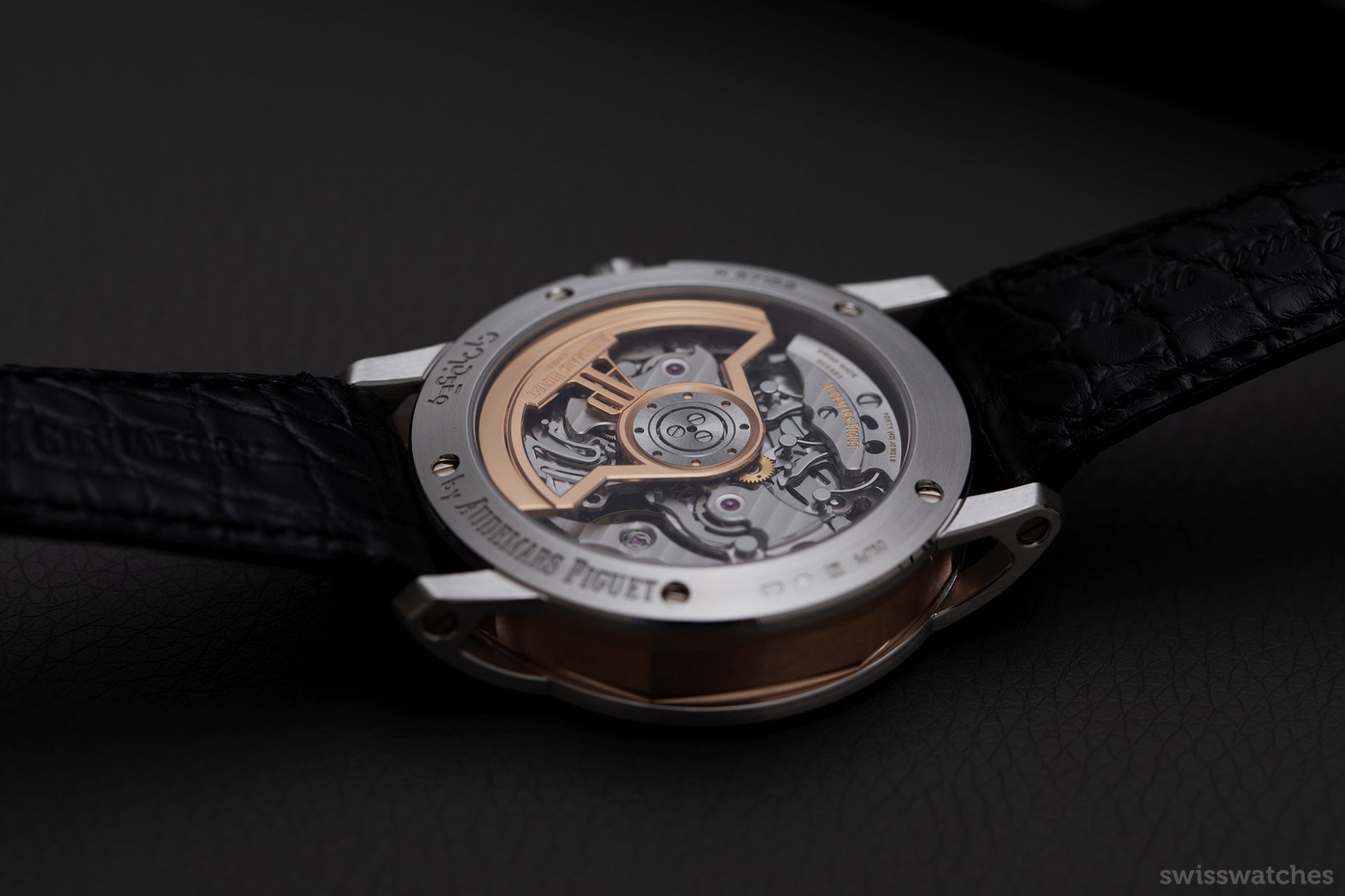
Meanwhile, the automatic calibre 4302 (also with a large diameter of 32 mm) is part of the same calibre family as its chronograph sibling, but is naturally much simpler. It provides hours, minutes, centre seconds and an instant-jump date indication. The movement features a decorated 22-carat gold oscillating weight, visible through the sapphire crystal caseback.
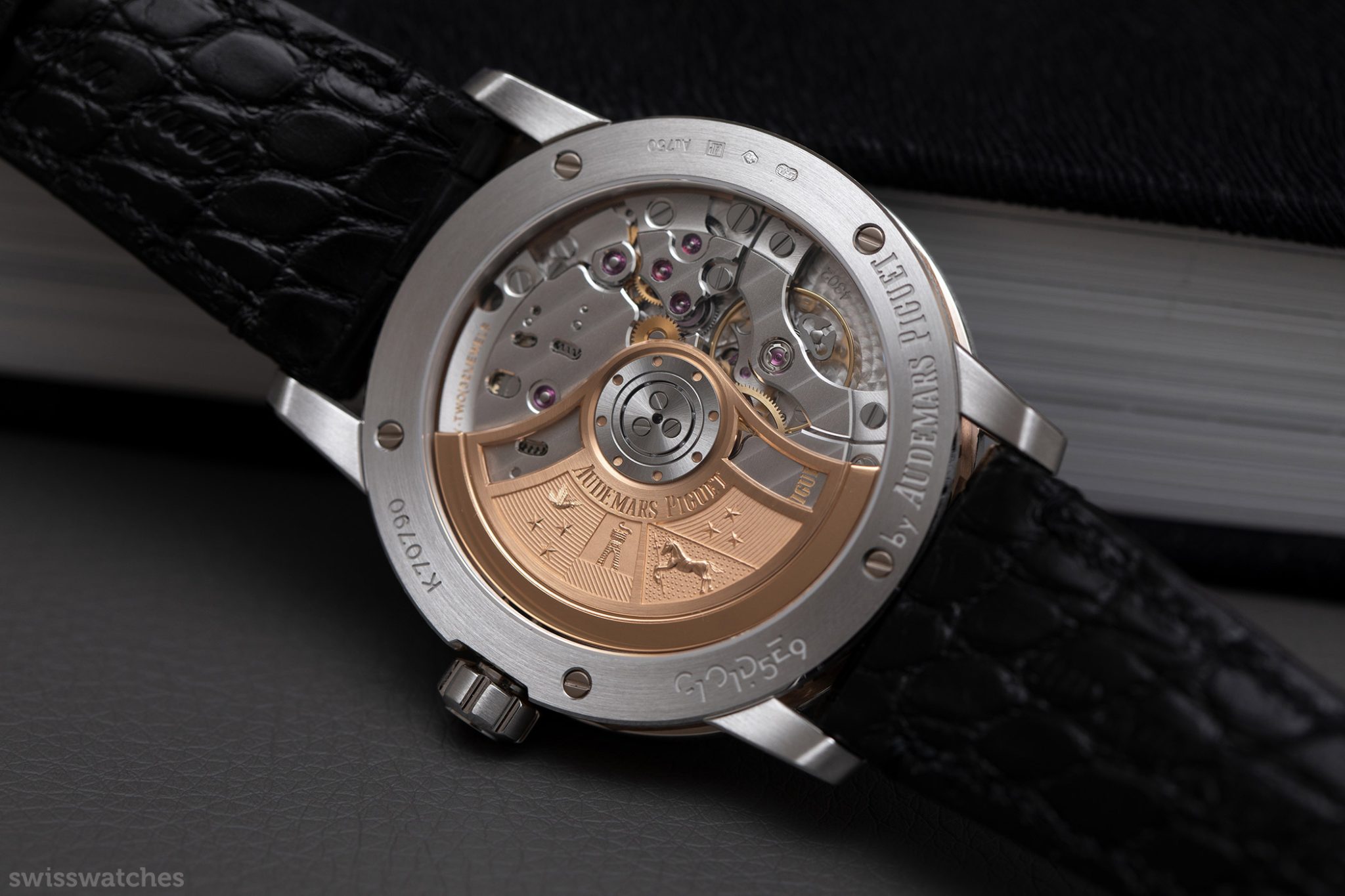
Finally, let’s not forget the basics – both calibres beat at a frequency of 4 Hz and have a 70-hour power reserve. Furthermore, thanks to the inclusion of a sapphire crystal caseback, the wearer of both models can take a look at several refined decoration techniques done by hand. This includes “traits tirés”, “Côtes de Genève”, plus circular graining, circular satin, and diamond-polished angles.
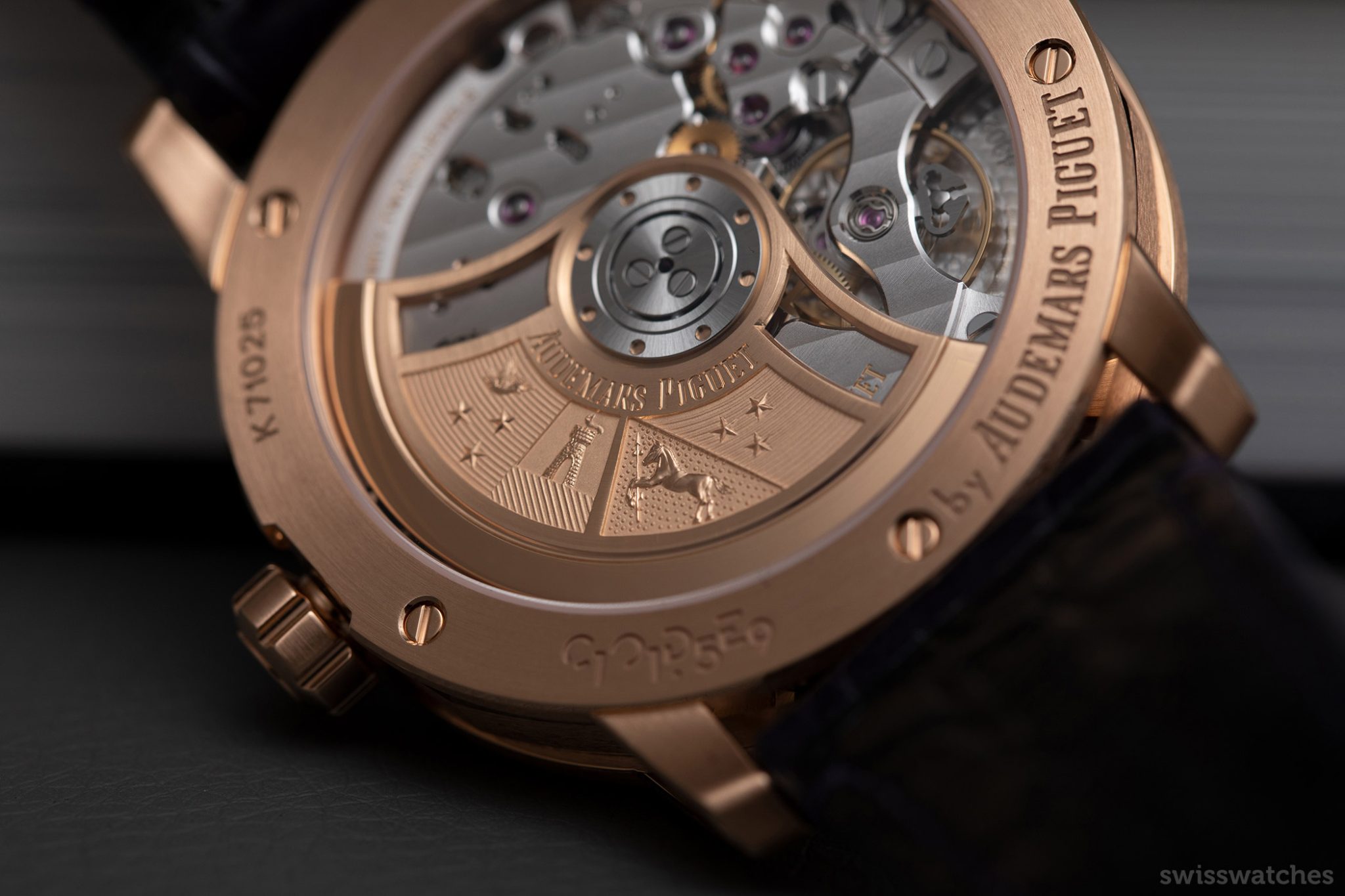
The Strap
The watches themselves are presented on hand-stitched leather straps that match the colour of the dial. It would be interesting to see the dials accompanied by simply black straps, as the brighter models such as the burgundy watches would have an entirely different look. It would be even more intriguing to see how these watches – at least the white-gold editions – might look with bracelets, as the chronographs in particular, with their digital-looking tachymeter scales, could look more like a sports watch.
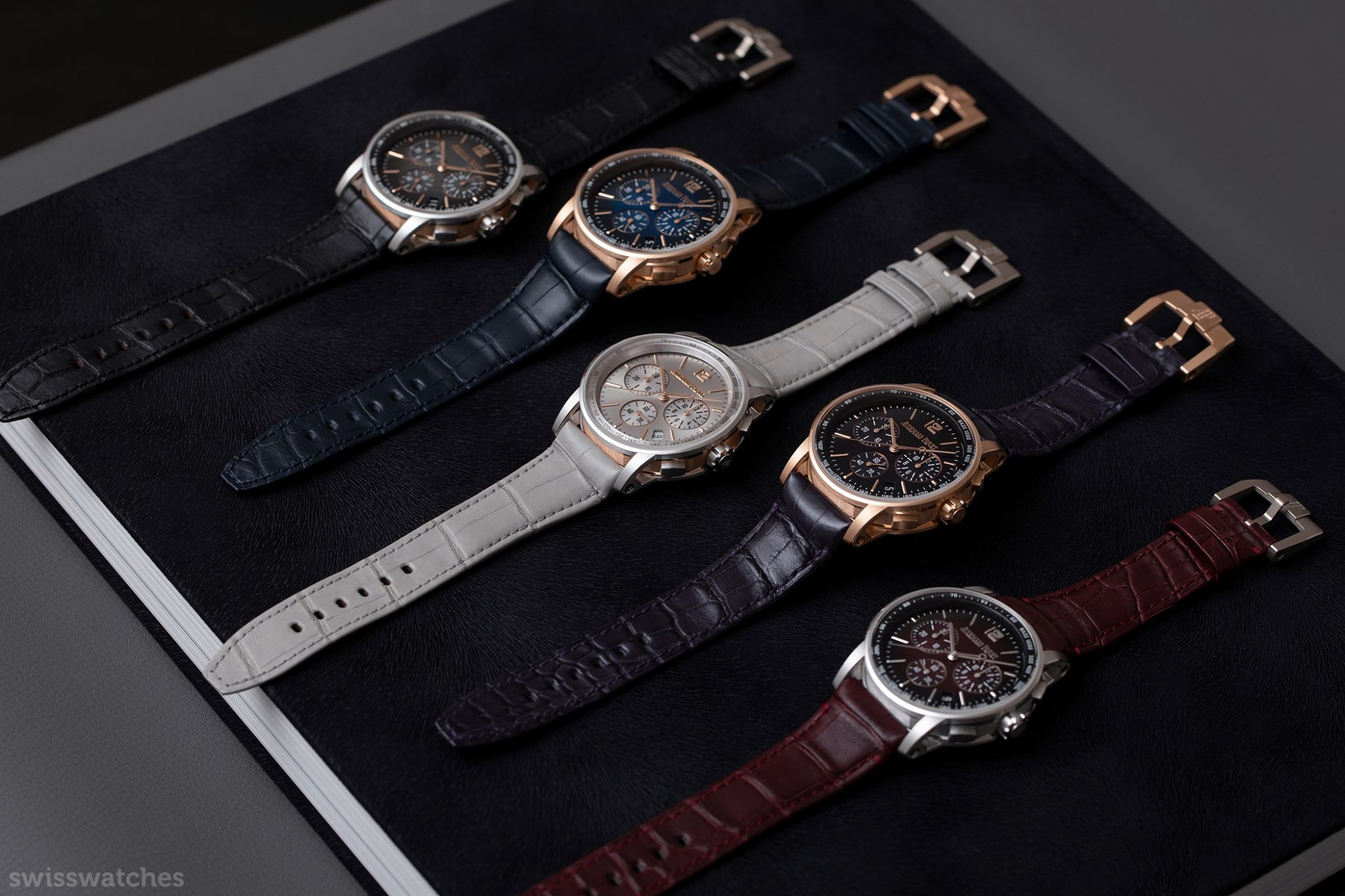
The straps also to an extent manipulate the dial colour – without the grey leather strap, for example, the grey dial could be taken for being white. In any case, the current hand-stitched “large square-scale” alligator straps with matching 18-carat white-/pink-gold pin buckles, integrate into the design quite well, and ultimately allow for the case shape and eye-catching dials to take centre stage.
The Verdict
Ultimately, 2020 has not brought many significant changes to the CODE 11.59 by Audemars Piguet watches. We could simply conclude that this is due to the already impressive case design, high attention to detail, and richly coloured sunburst dials. However, while these elements make for a crucial part of any watch review, it is also worth analysing what the latest collection is actually telling us about the brand, its strategy, and its followers.
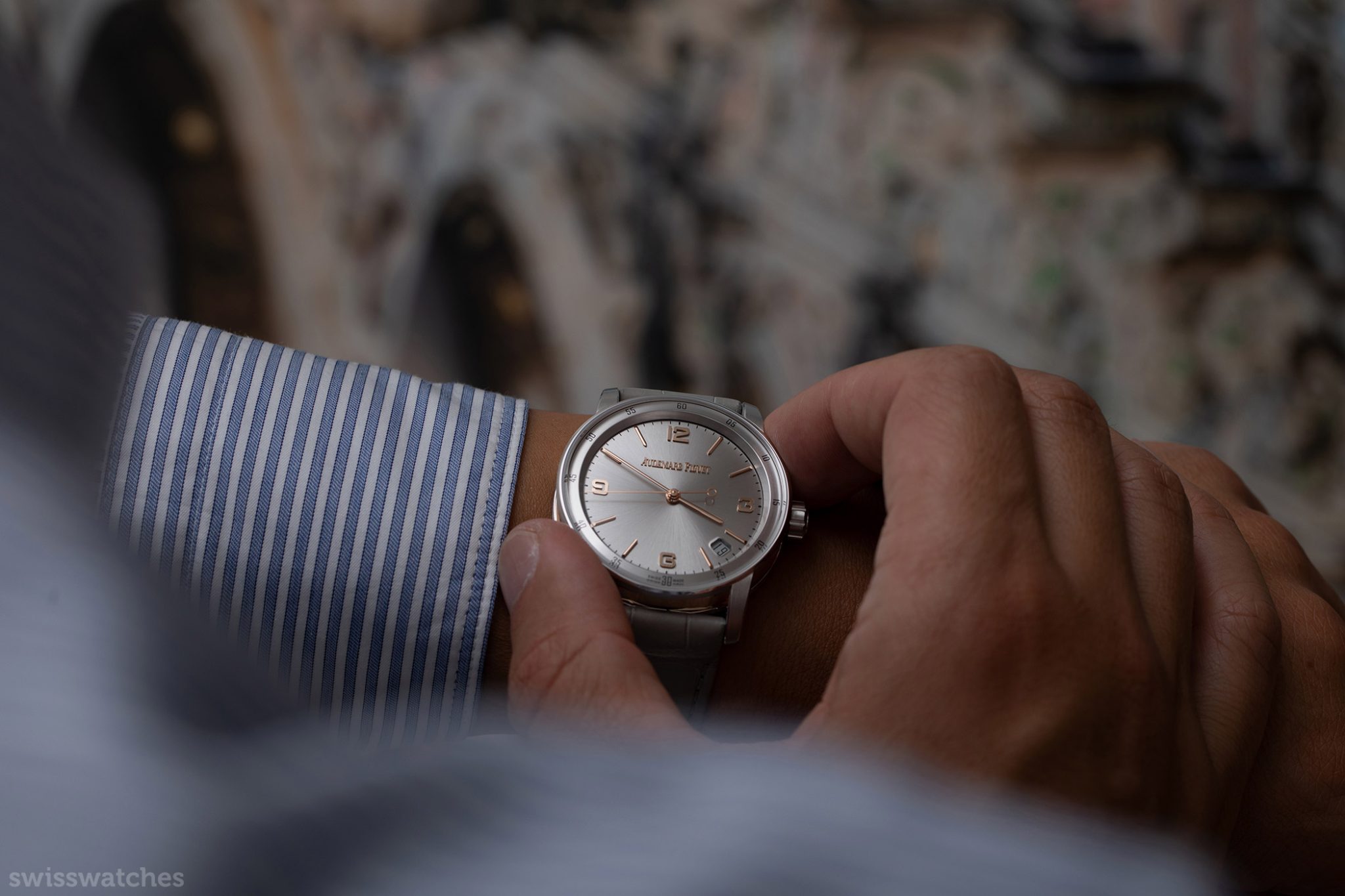
Returning to the first point of this article: Audemars Piguet is incredibly well-known for its Royal Oak line. So why the investment in the CODE 11.59 by Audemars Piguet watches once again, despite any truly exciting new qualities? Of course, it clearly sold well in its first year. But on a deeper level, my answer would be that fundamentally, these watches are encouraging not only the horology house, but also its followers, to step out of their comfort zone.
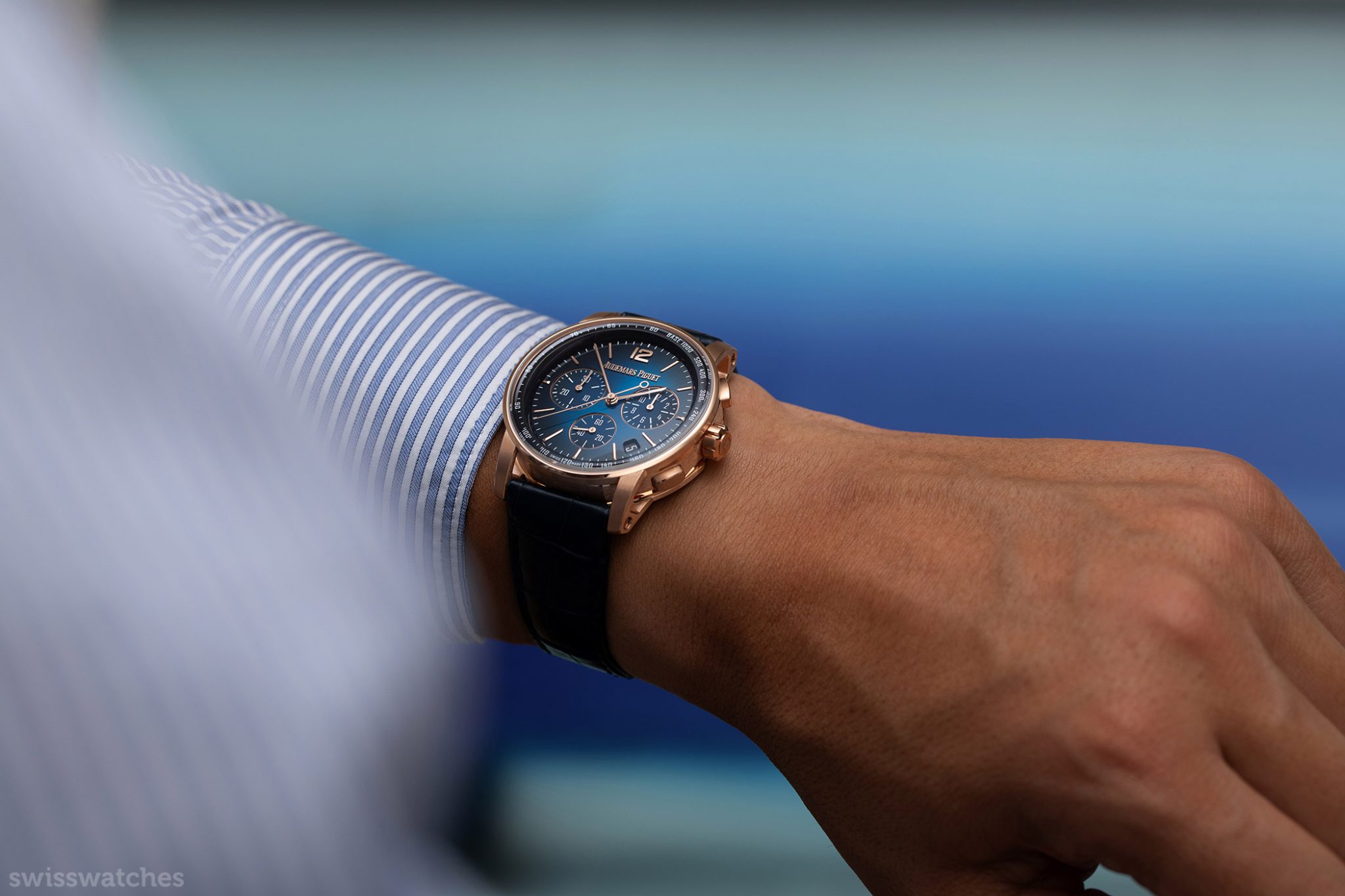
Having one thing define us can be both a blessing and a curse, and it’s sad how easy it is to forget what brands have to offer, as we are often fixated on brands’ most iconic designs, from Jaeger-LeCoultre’s Reverso to Breitling’s Navitimer. No, the CODE 11.59 by Audemars Piguet won’t be nearly as recognisable on your wrist and yes, fewer people will stop in public to complement your watch – at least for now. But that, of course, isn’t something that a watch should be all about.
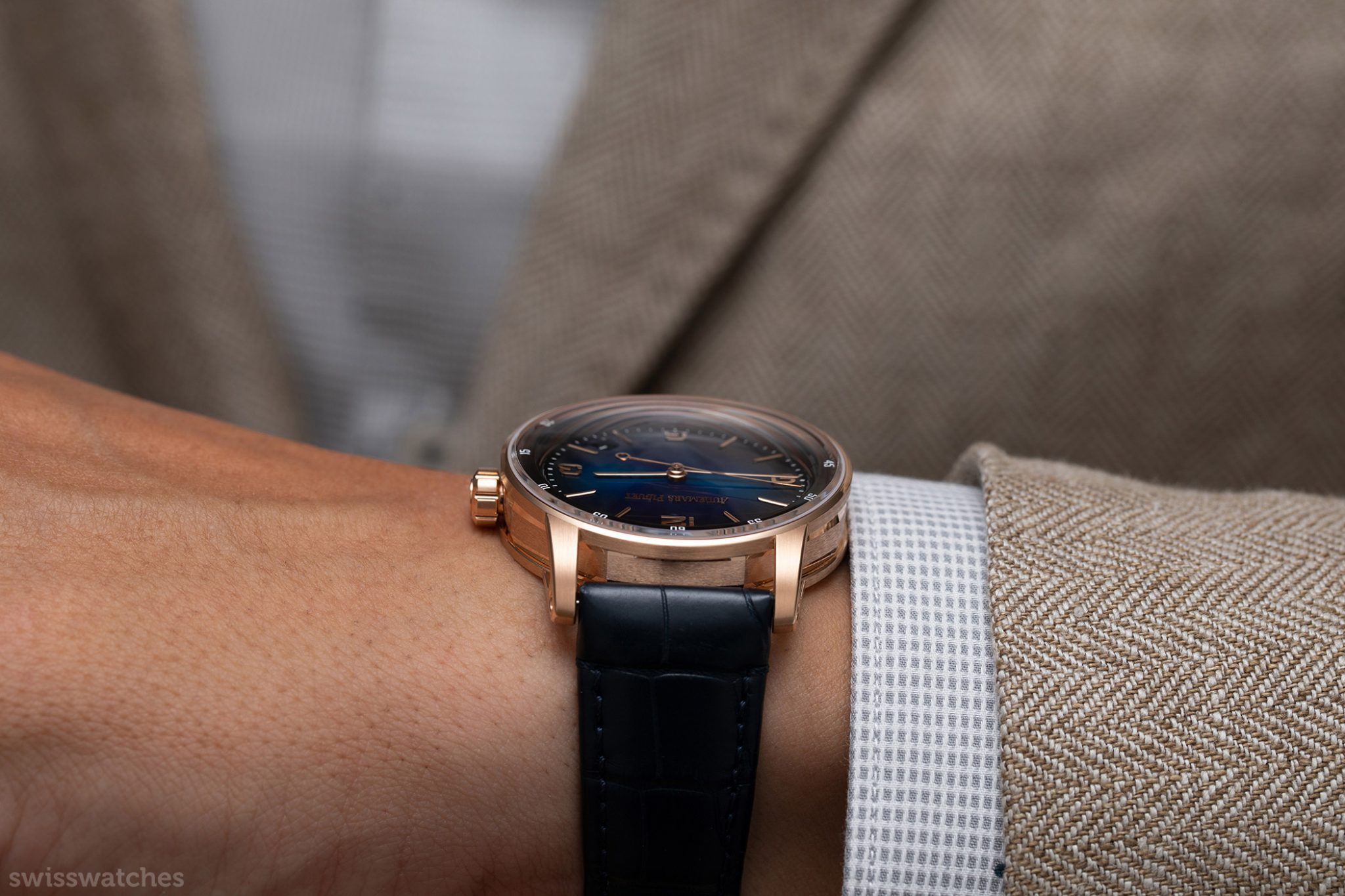
Some might argue that the release of Audemars Piguet’s latest Code 11.59 watches is a thinly veiled strategy designed to push consumers in a new direction, reach new customers, and also remind consumers of what the manufacture is capable of. Others might argue that the CODE 11.59 by Audemars Piguet simply doesn’t have the same wow factor as the Royal Oak‘s iconic and contemporary design. But let’s remember that upon its conception, the Royal Oak was also overlooked and derided. Personally, I think that the case and sapphire crystal in particular have the power to make the watch an invaluable part of the brand’s history.
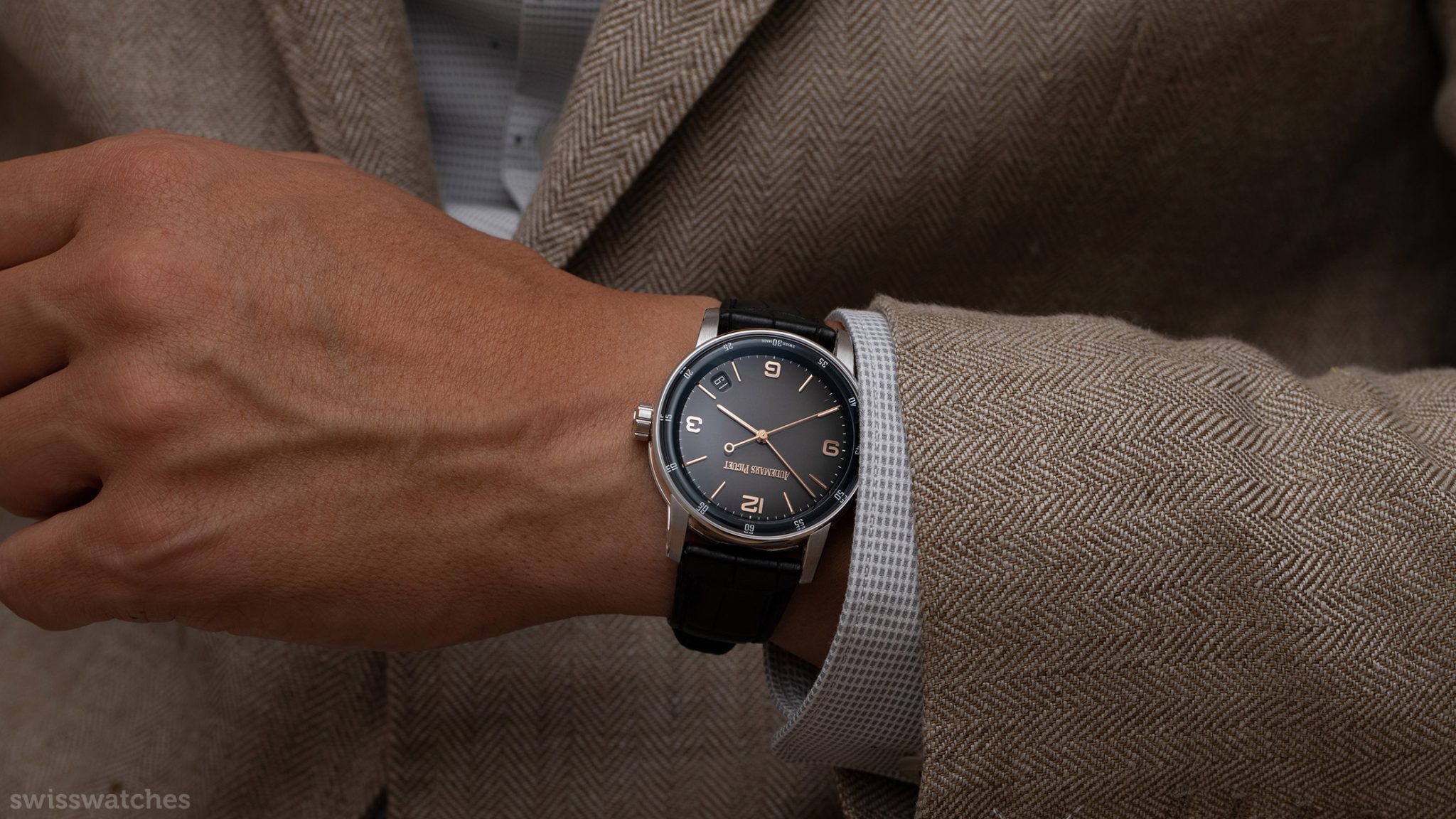
Having explored the depth of thought and detail behind its creation, it’s clear that the CODE 11.59 by Audemars Piguet can encourage us, as individuals, to open our eyes and our minds, and see that there is a wealth of watches waiting to be discovered – if only we learn to look past the cult classics.
All Selfwinding models are priced at 27,900 euros, while all Selfwinding Chronograph models are priced at 44,100 euros. The new CODE 11.59 by Audemars Piguet timepieces are available to purchase in Audemars Piguet boutiques from July 8, 2020.







